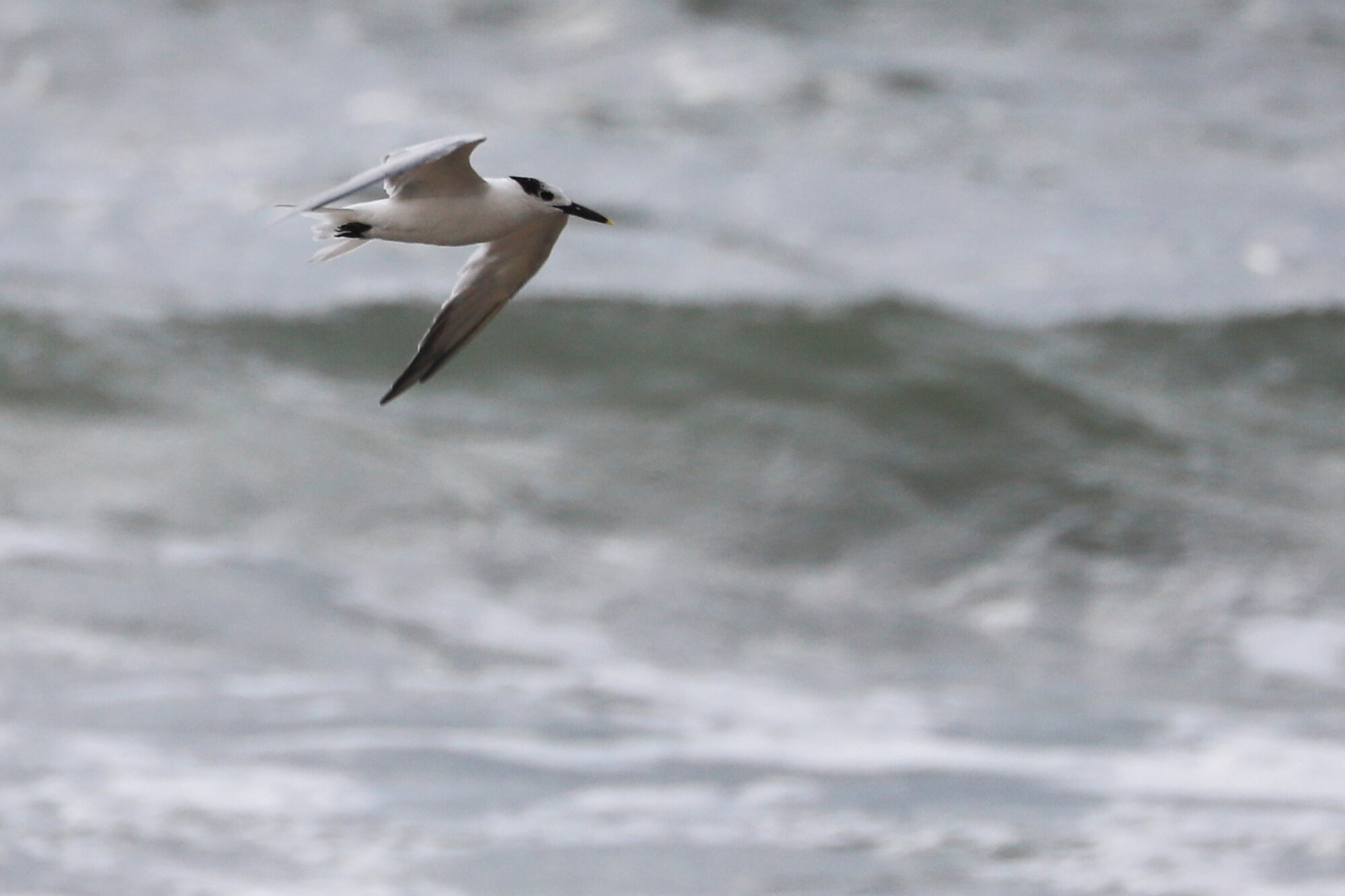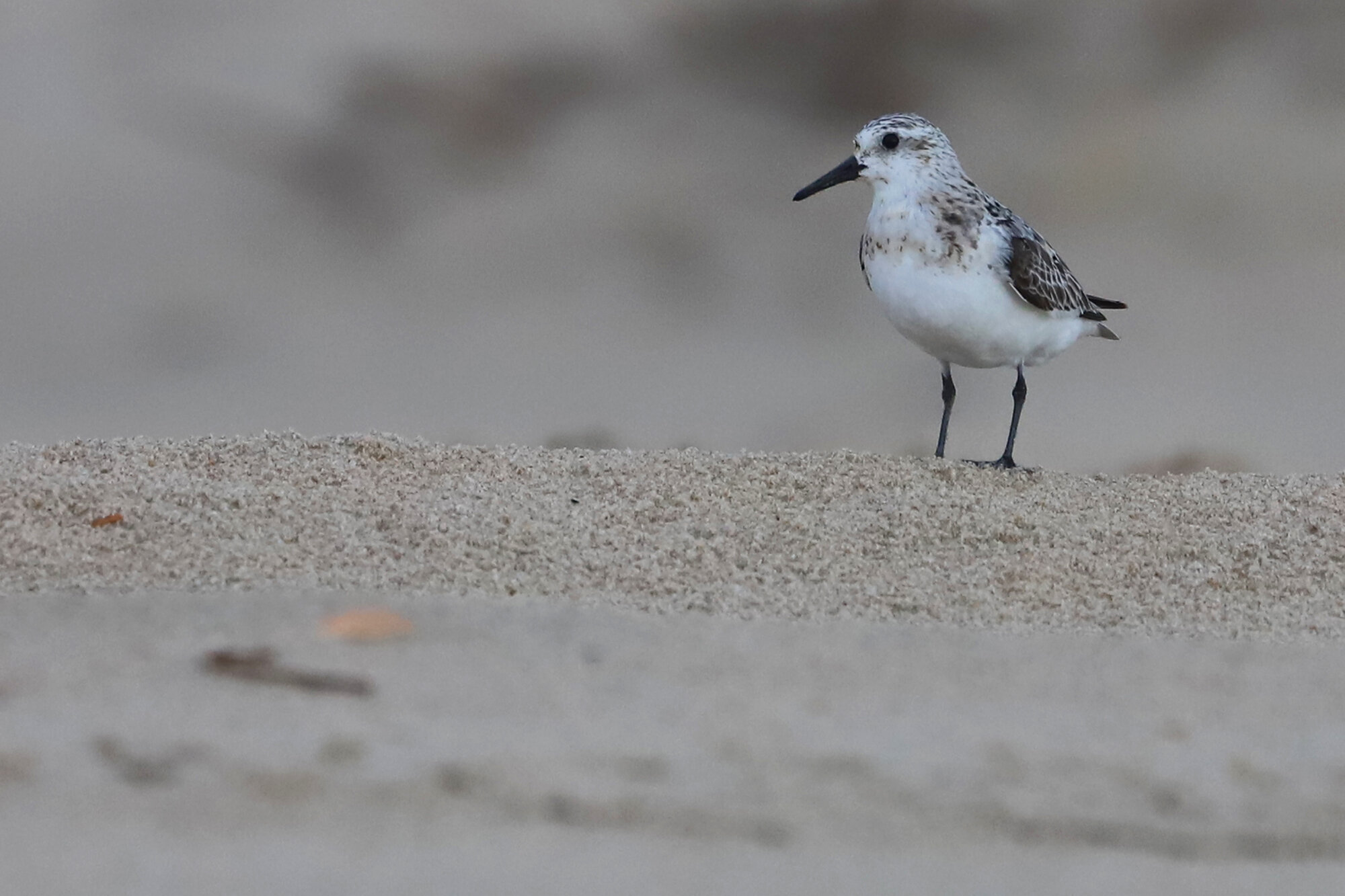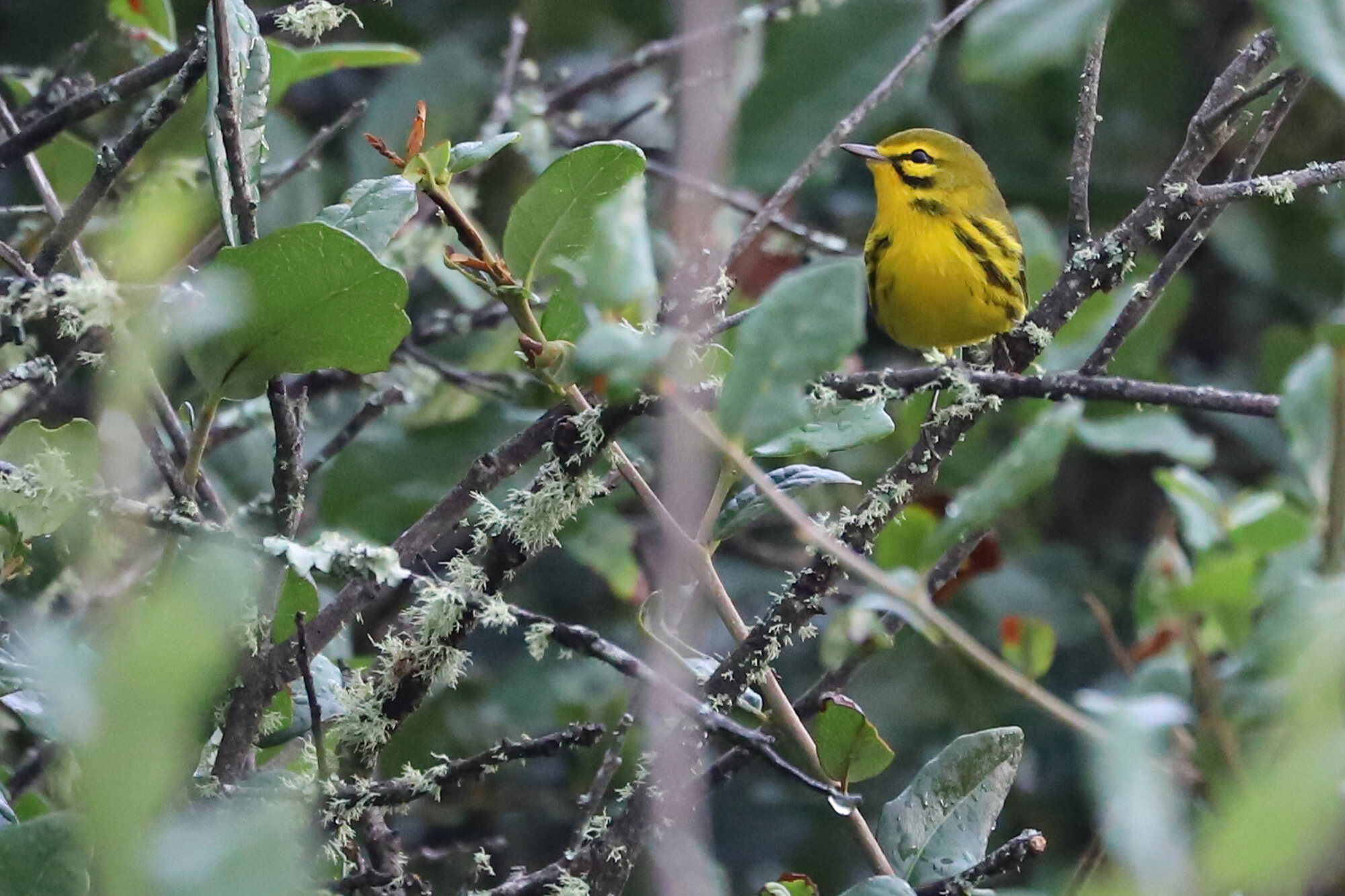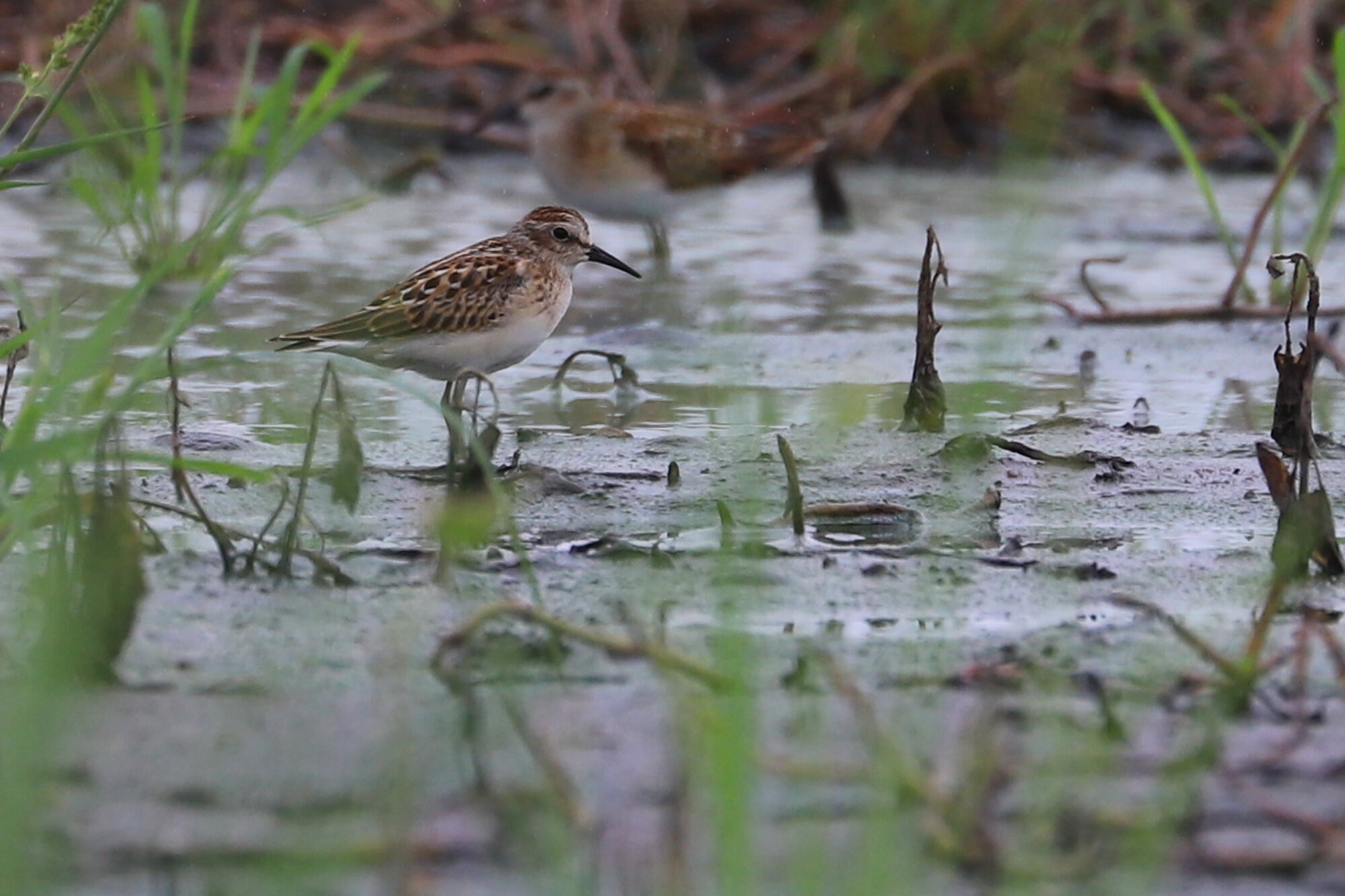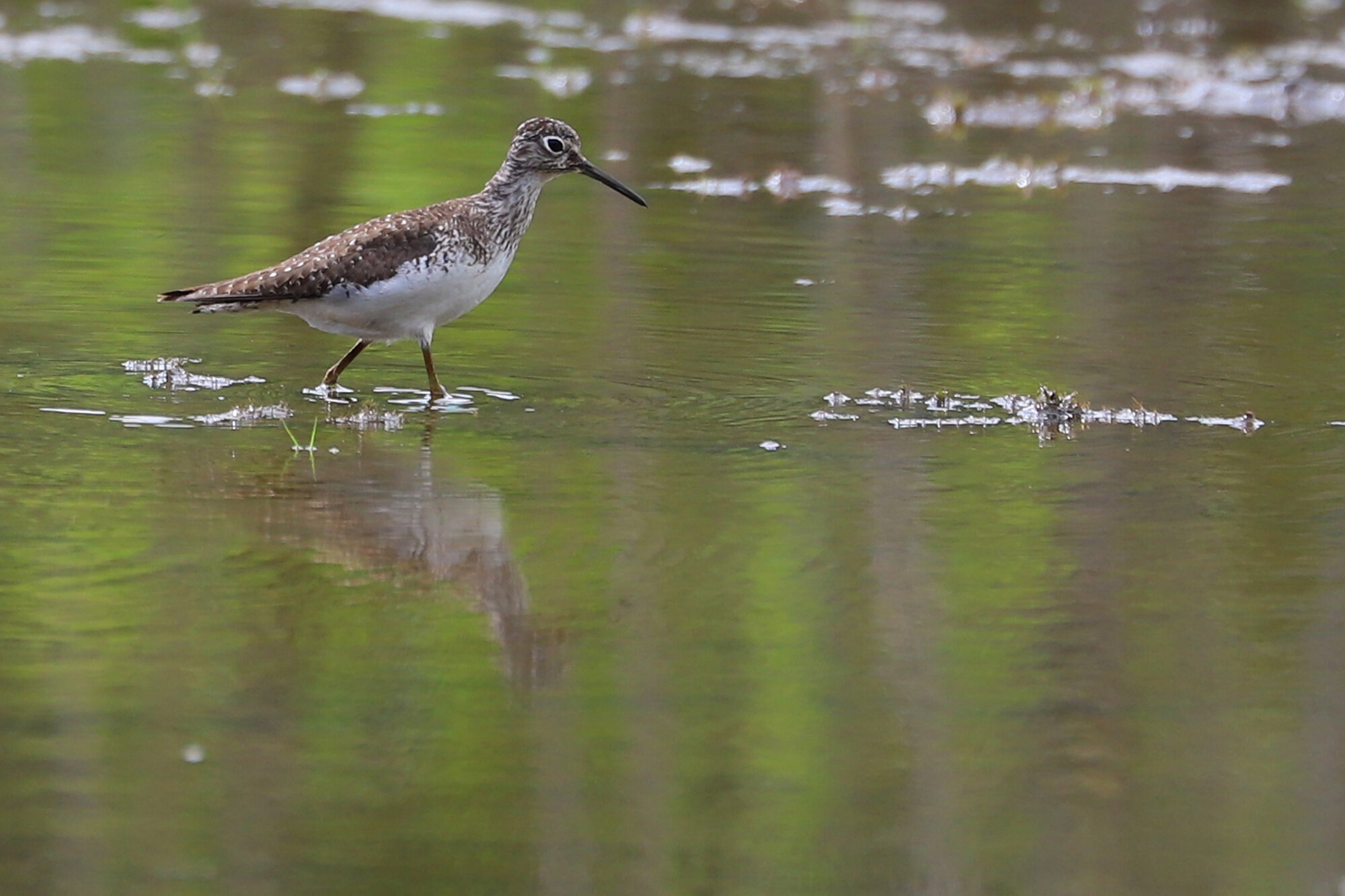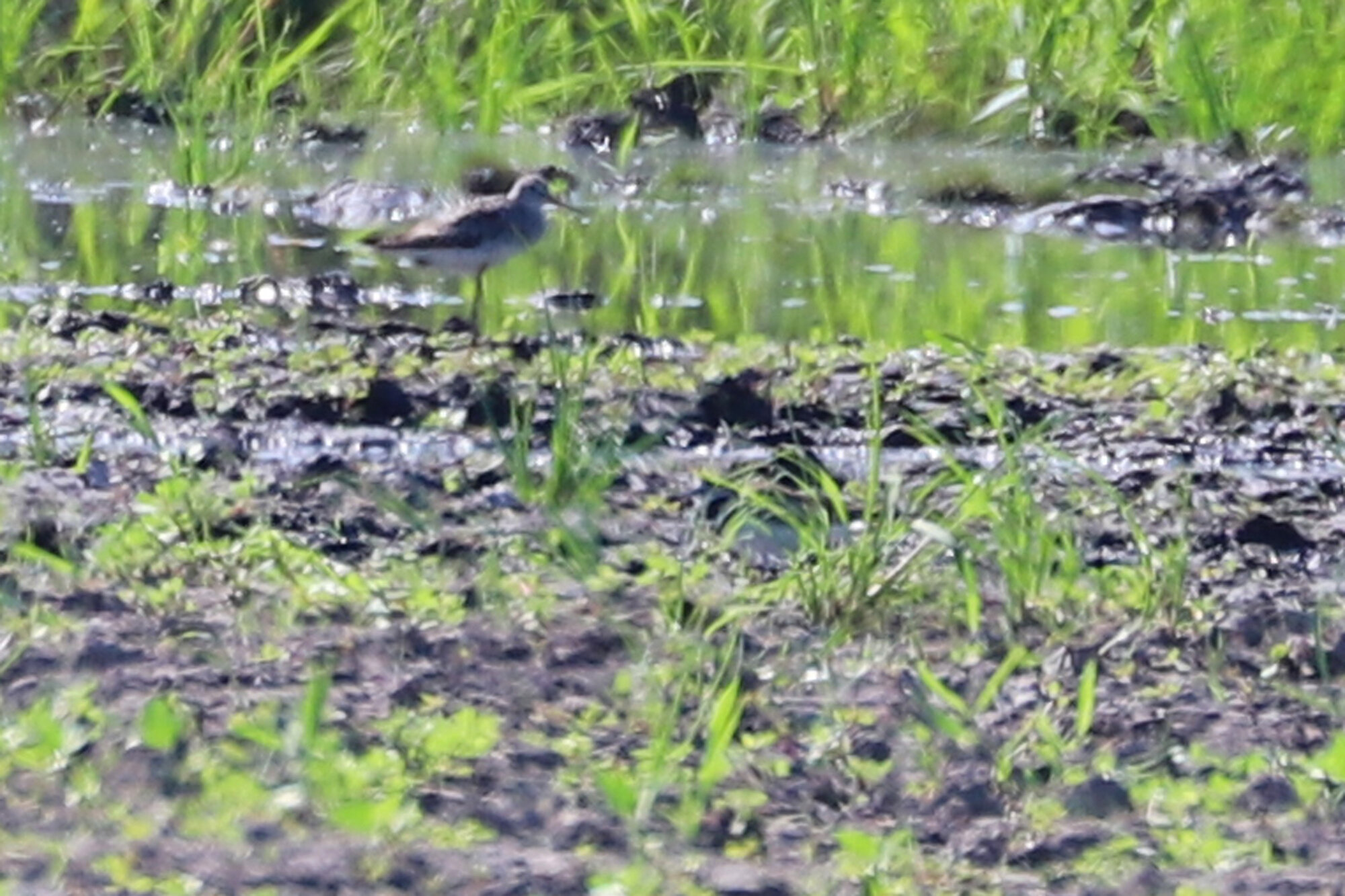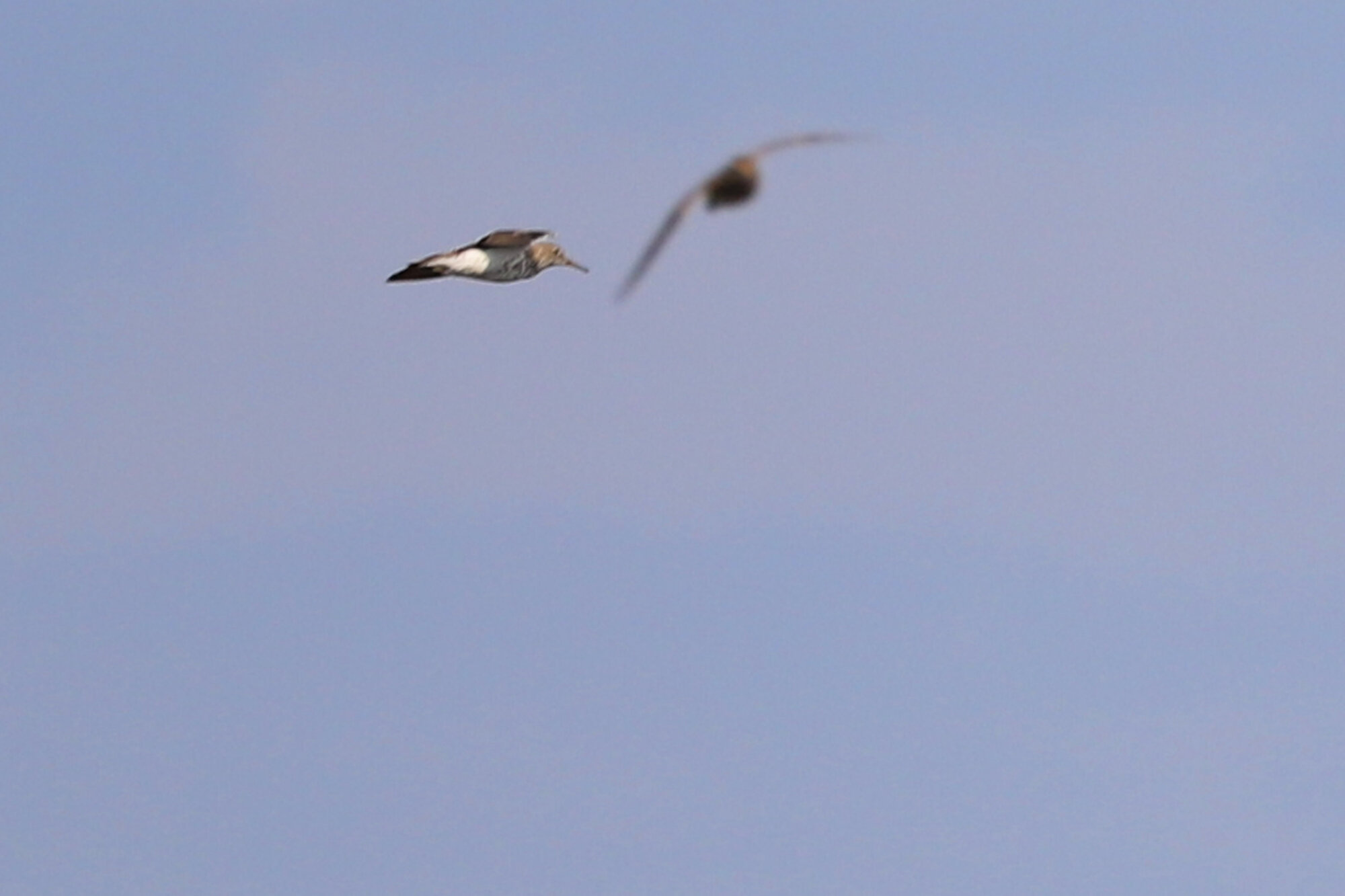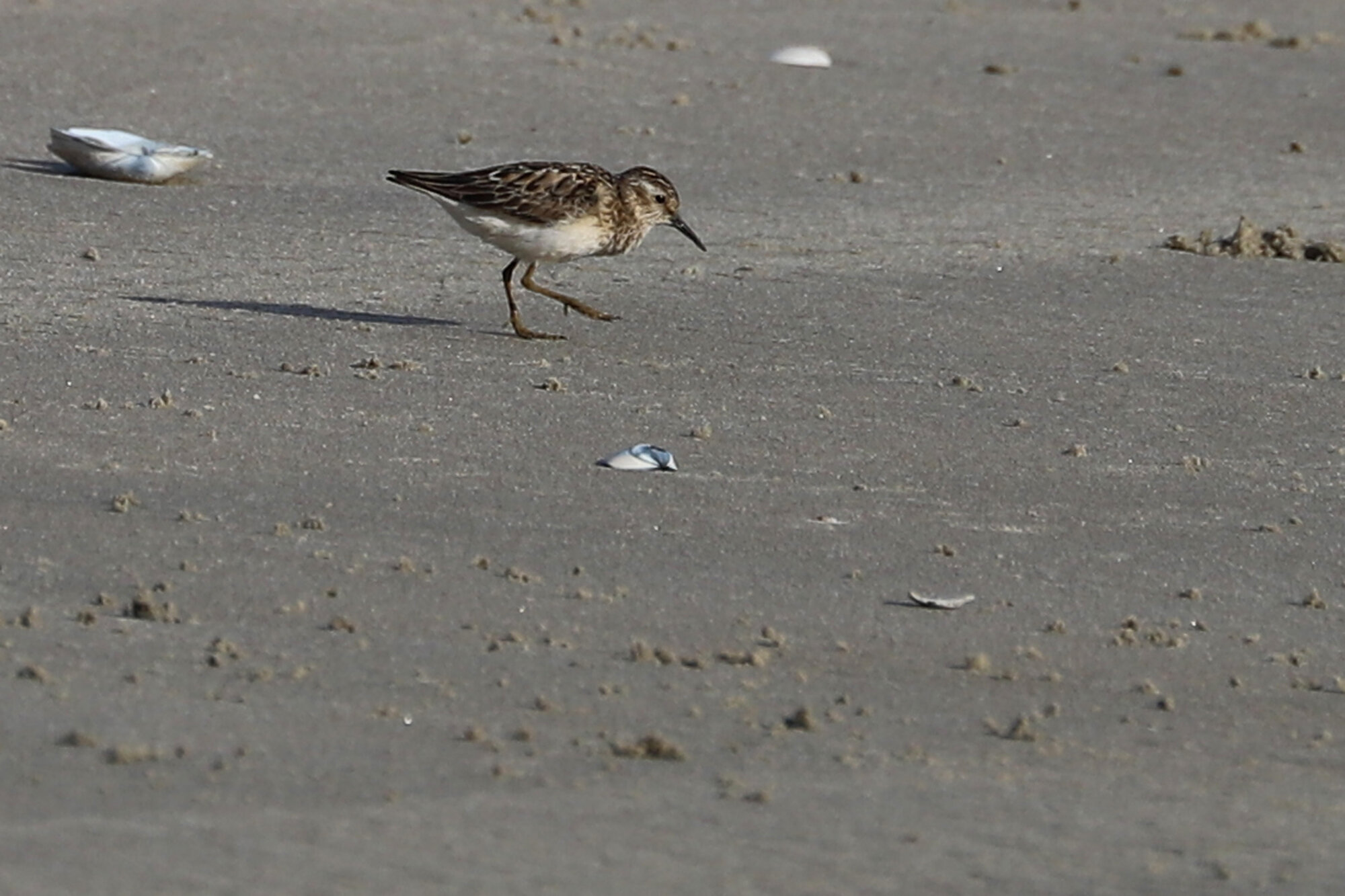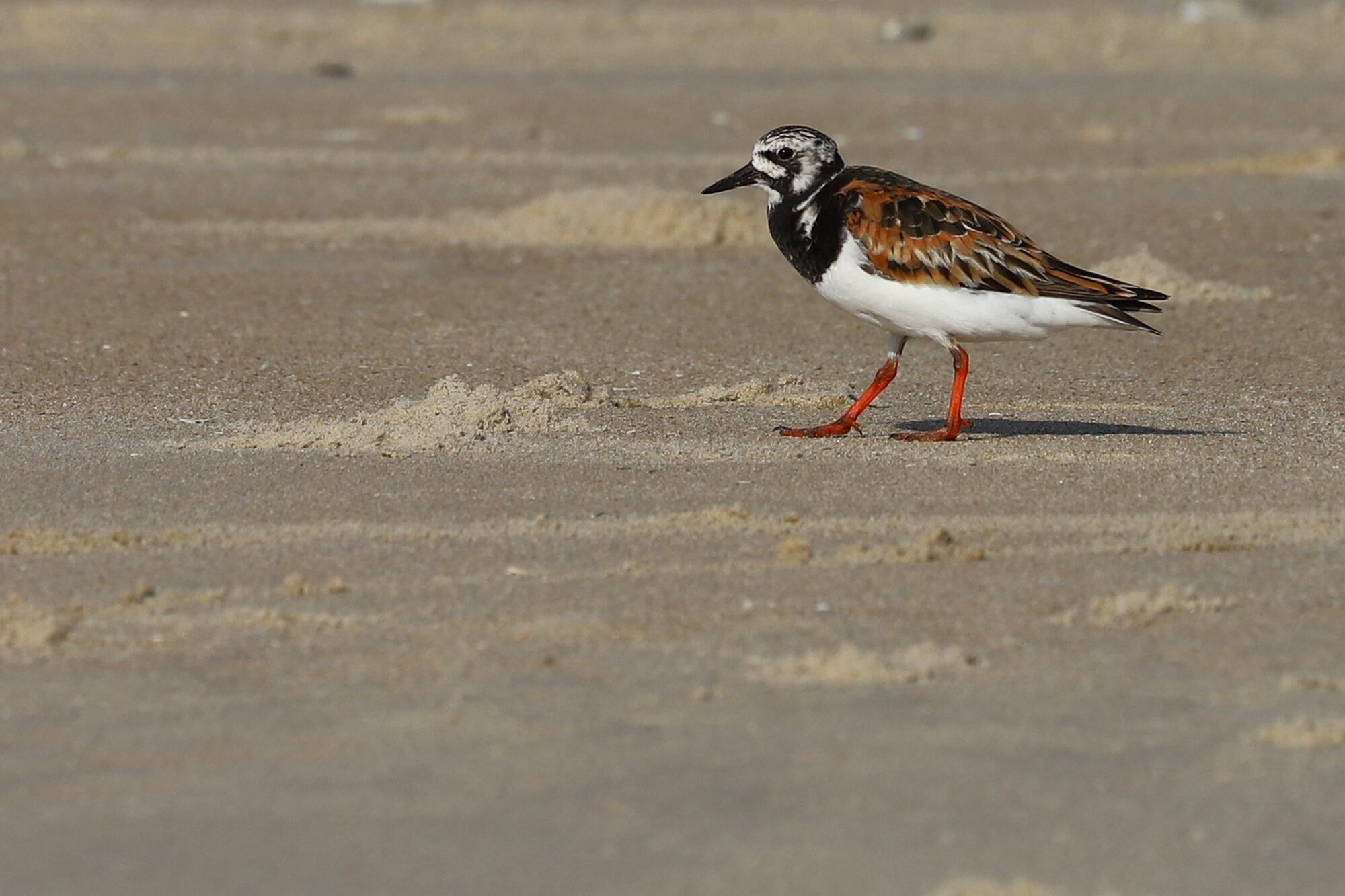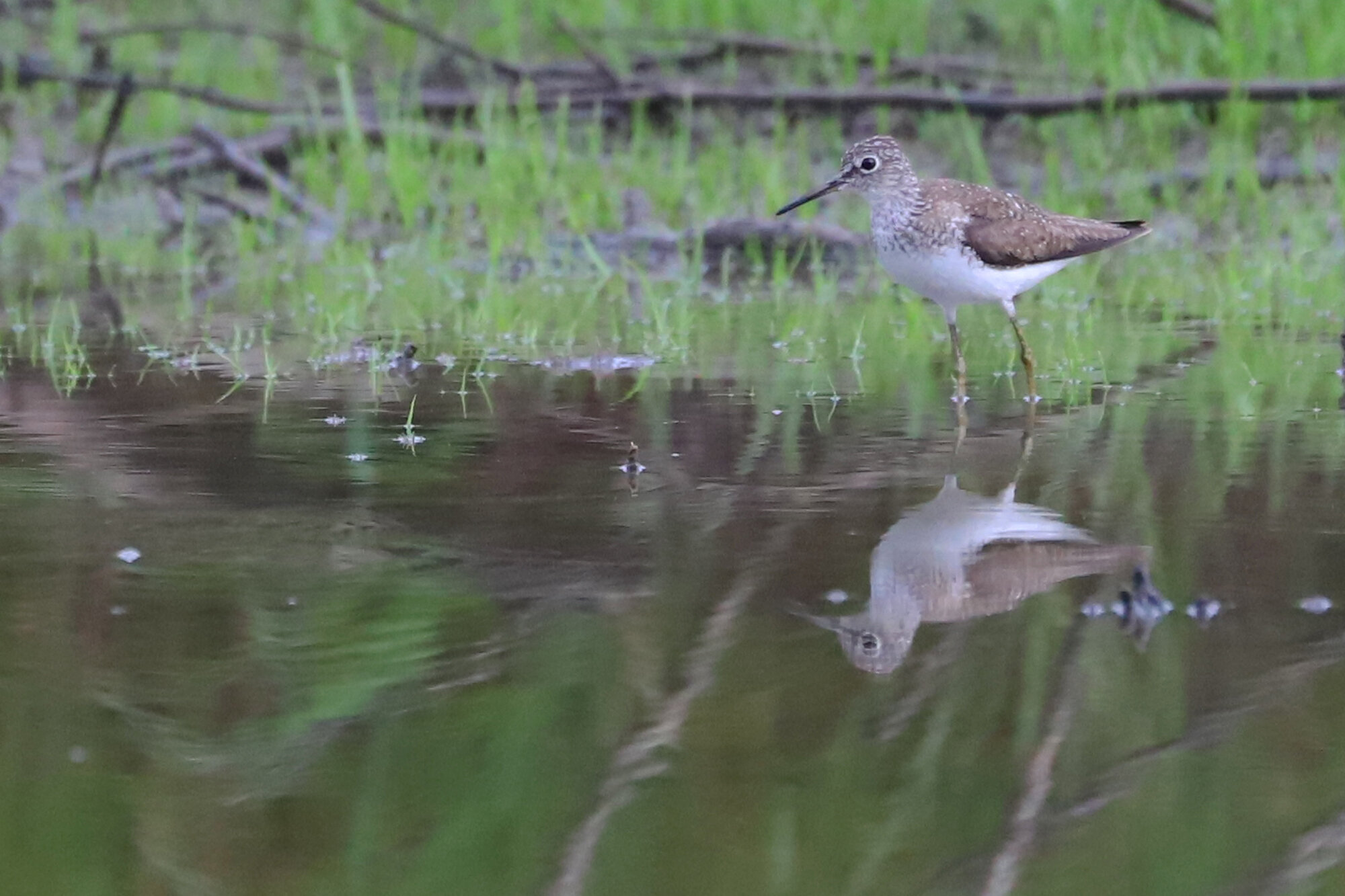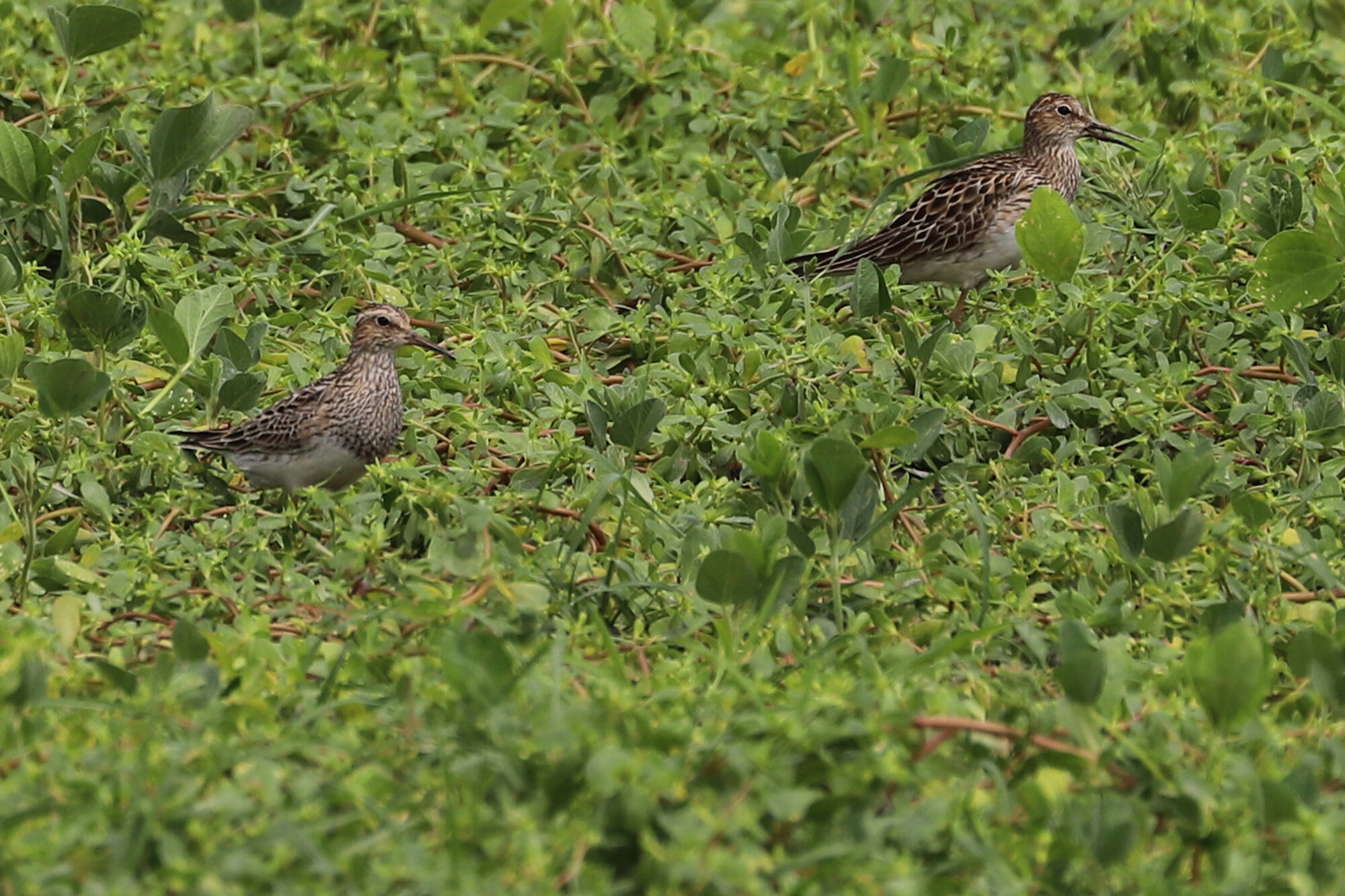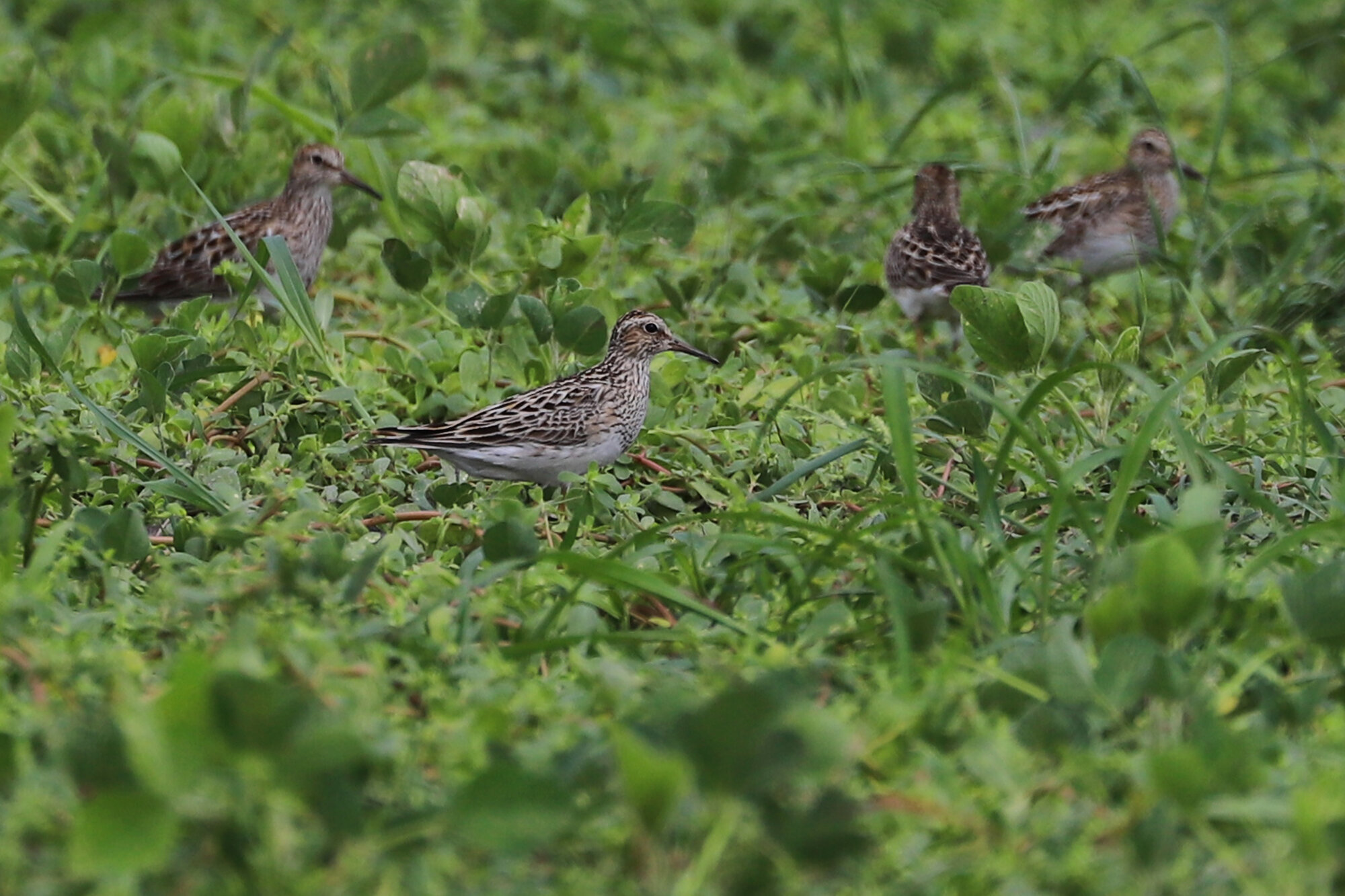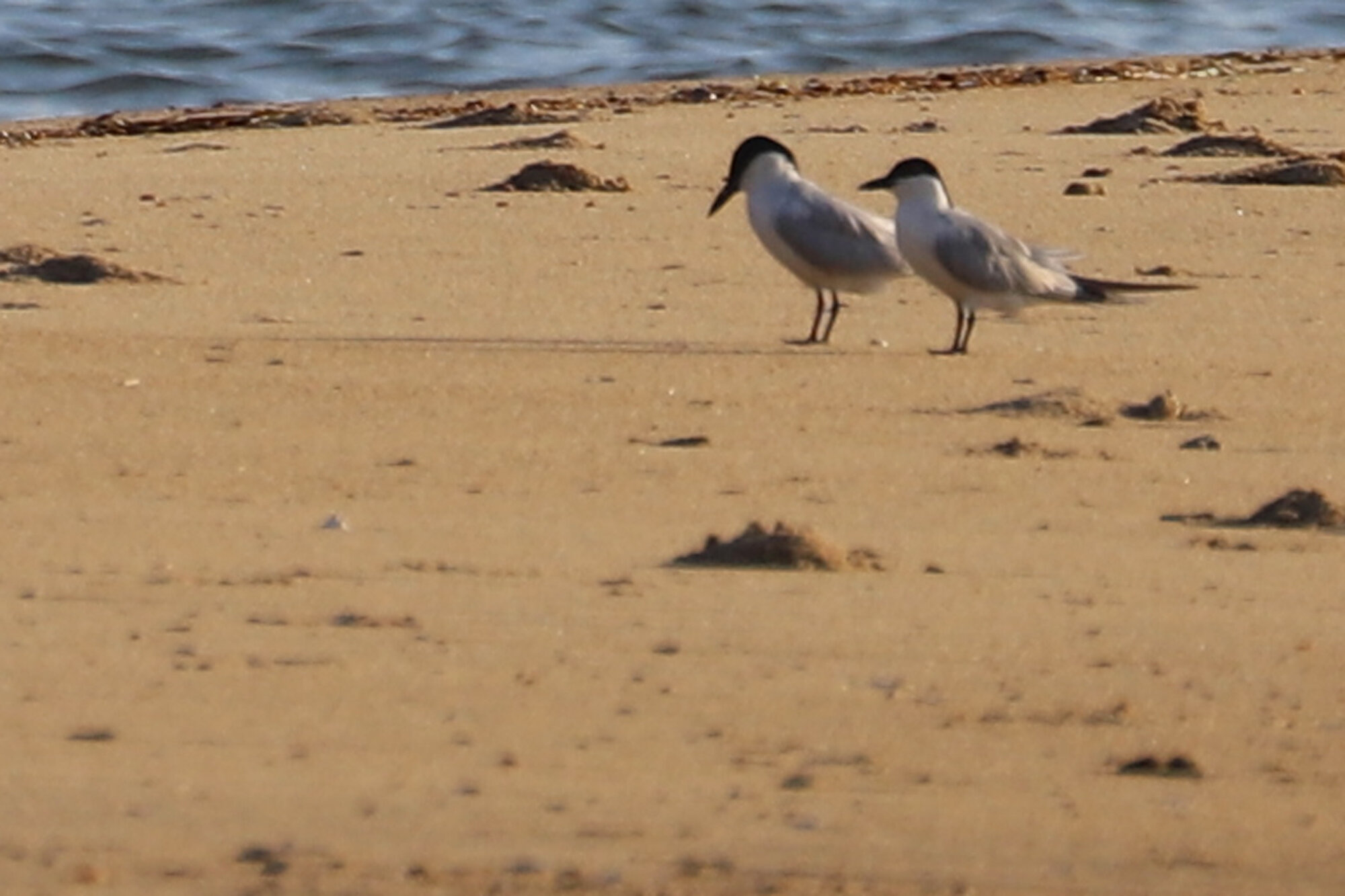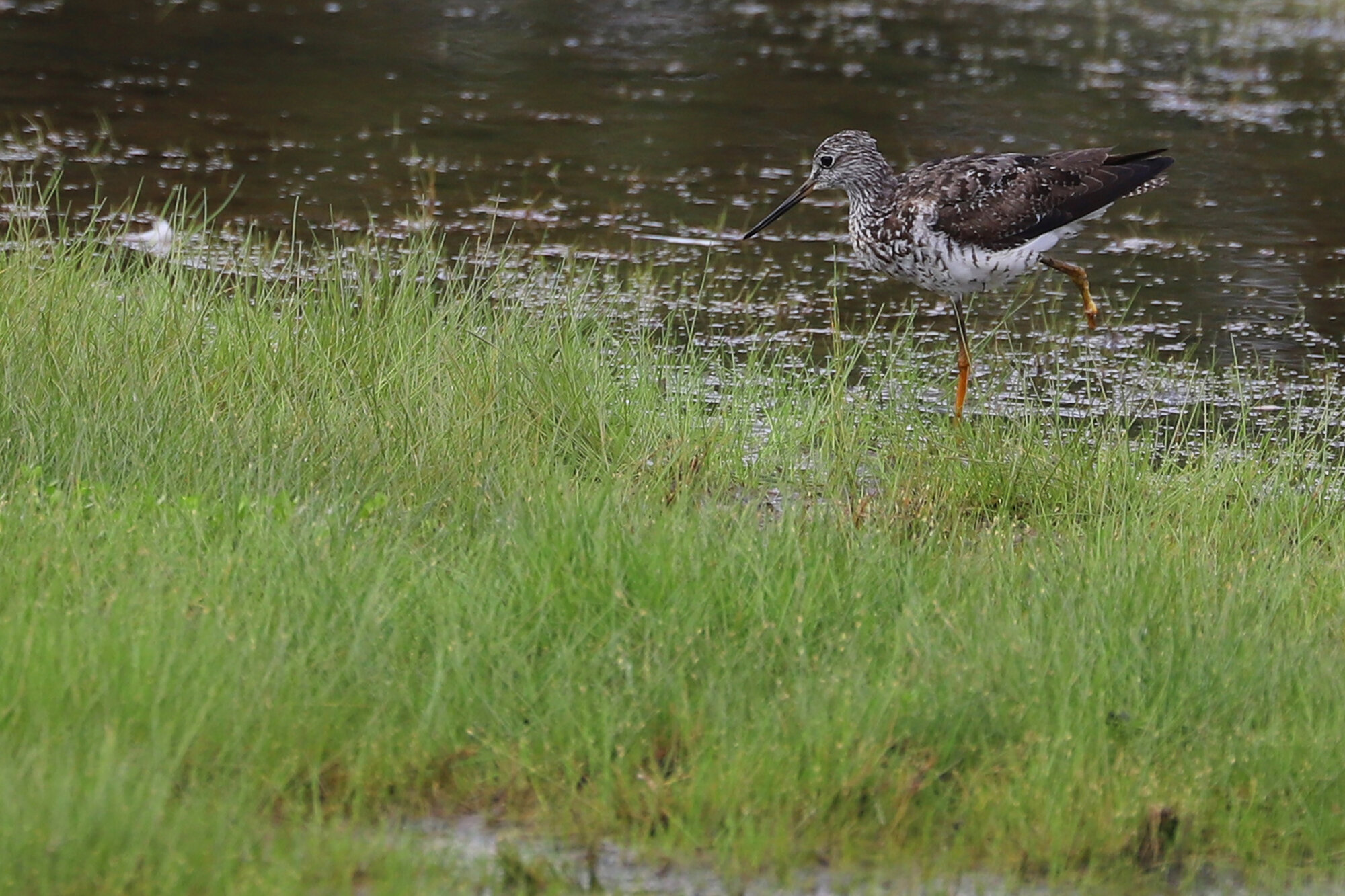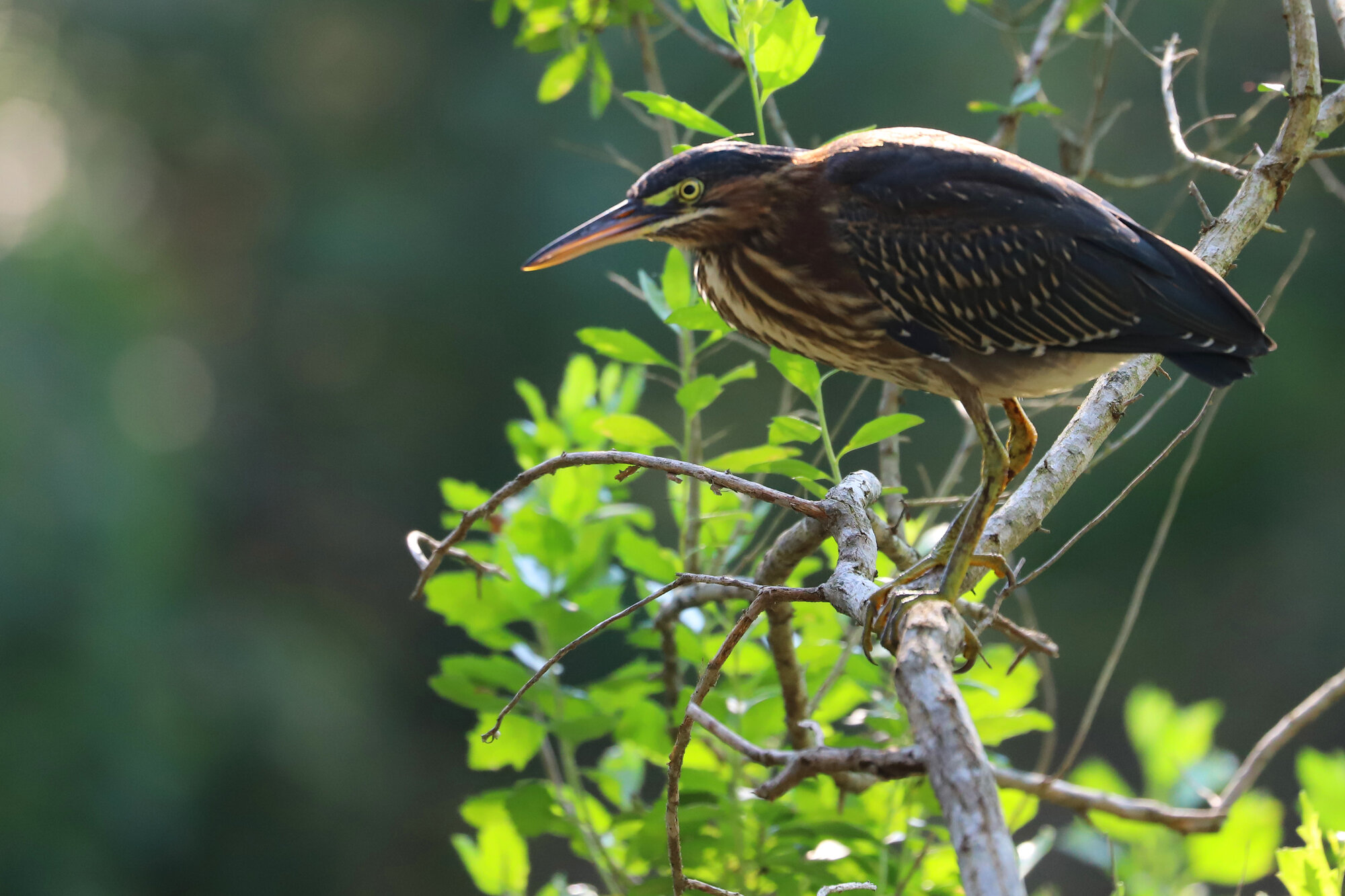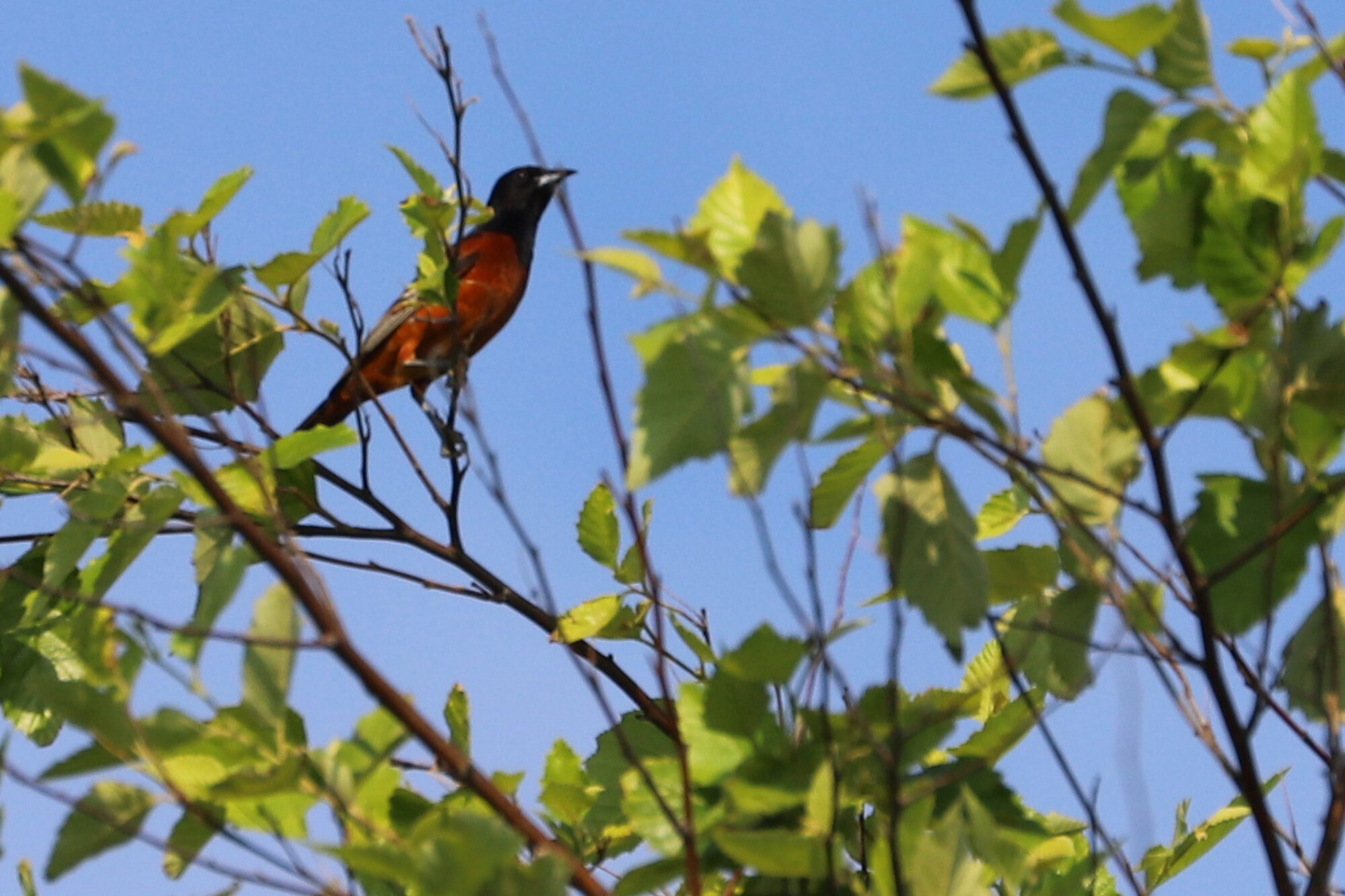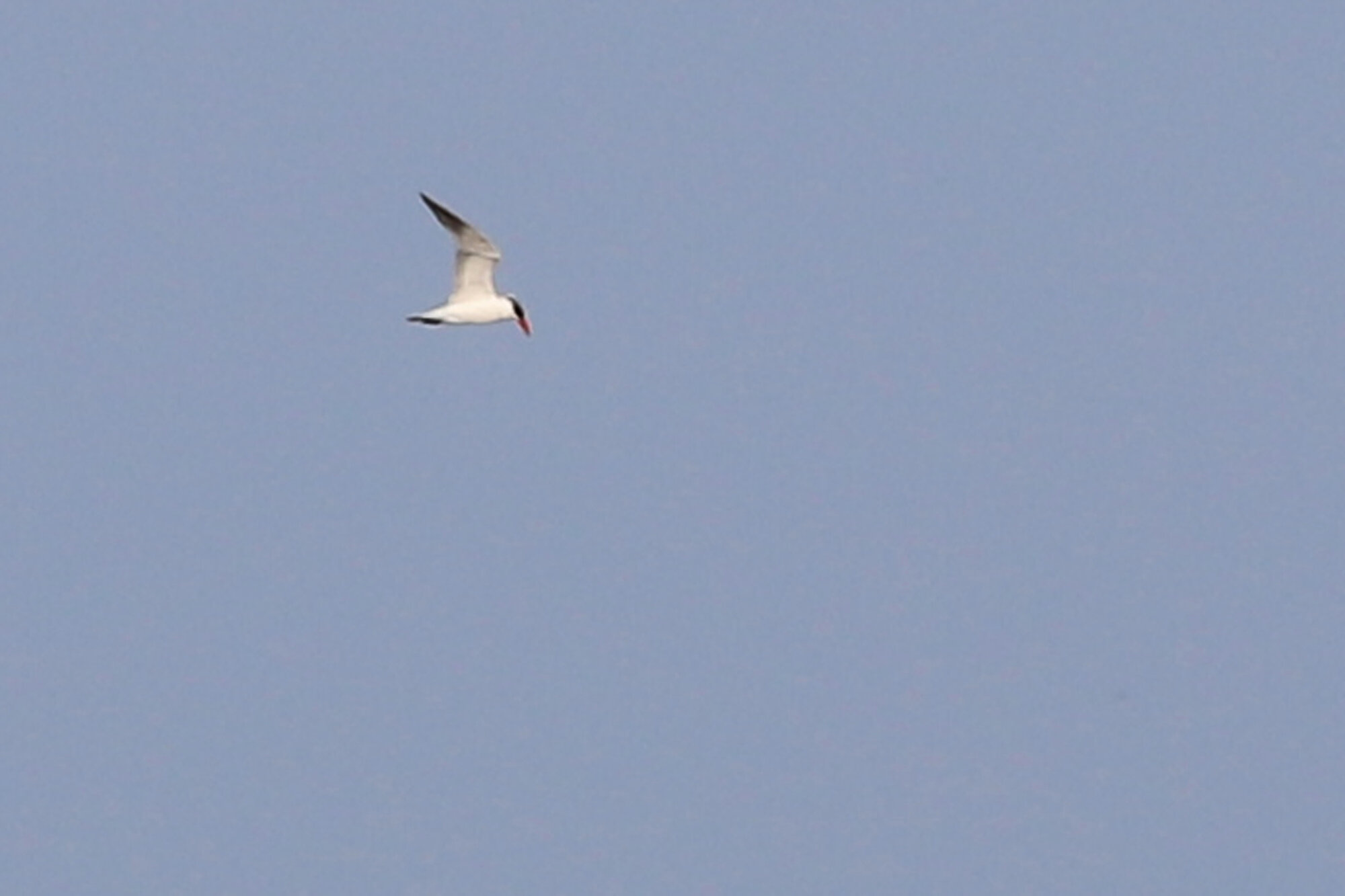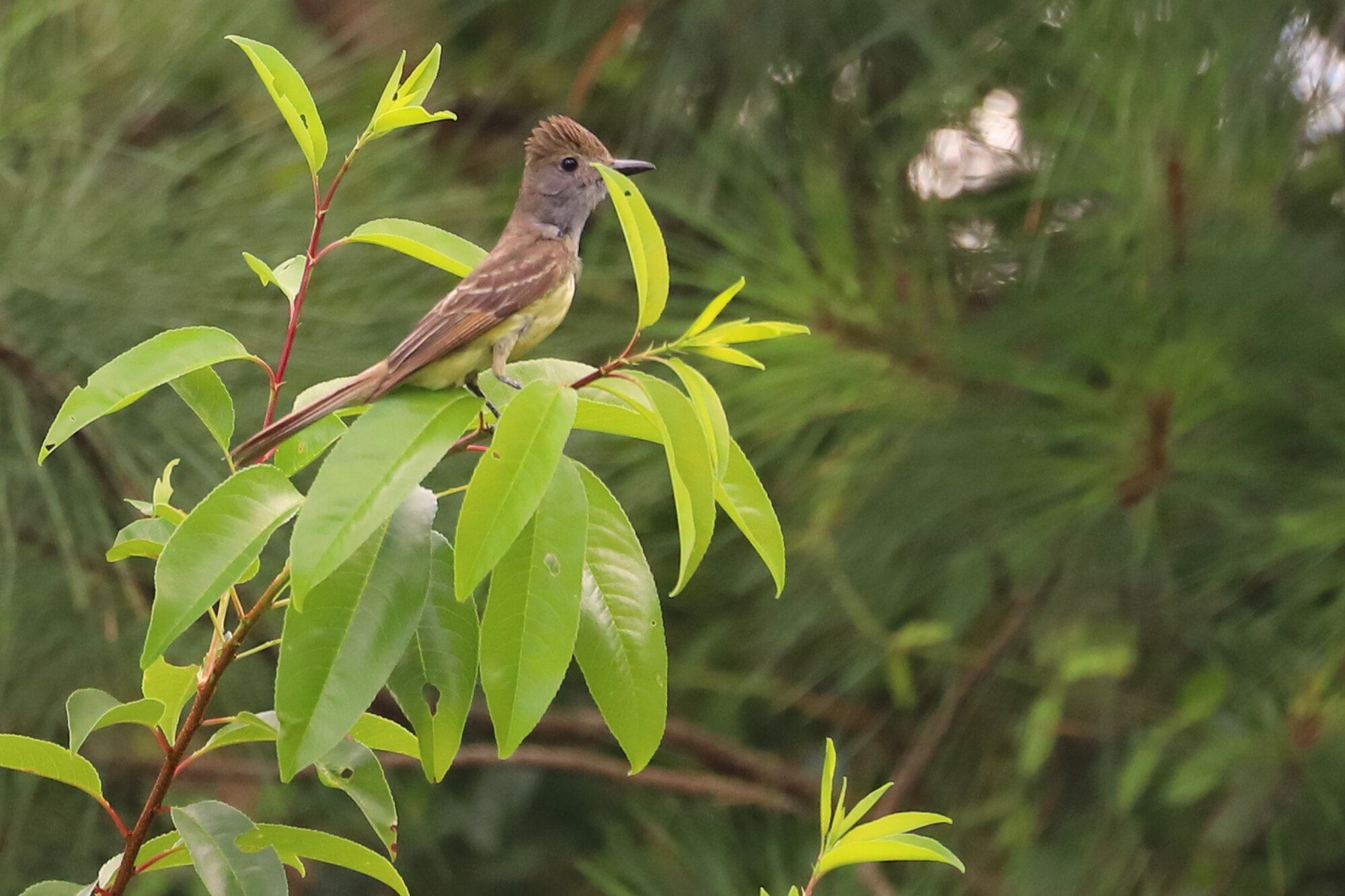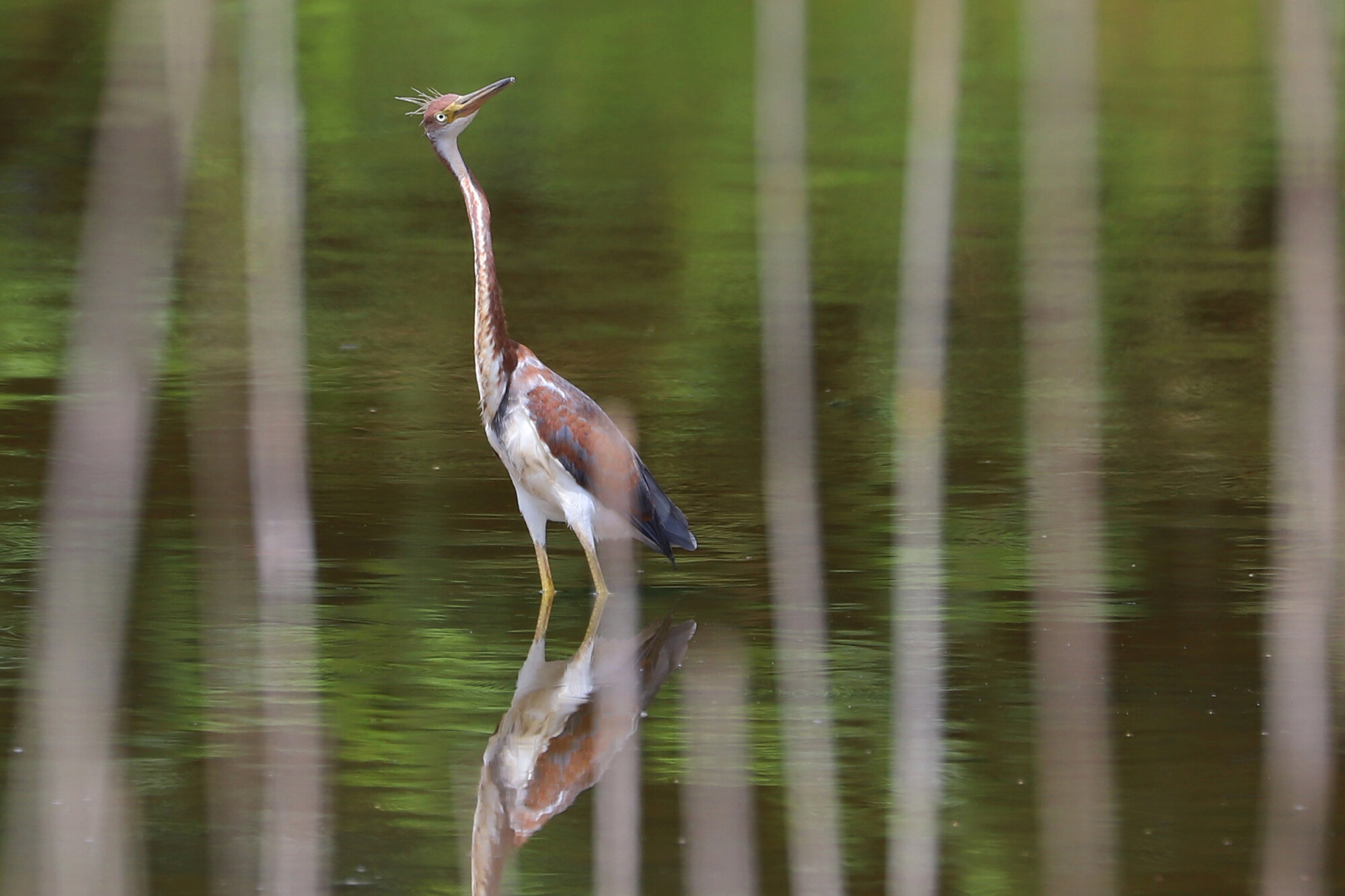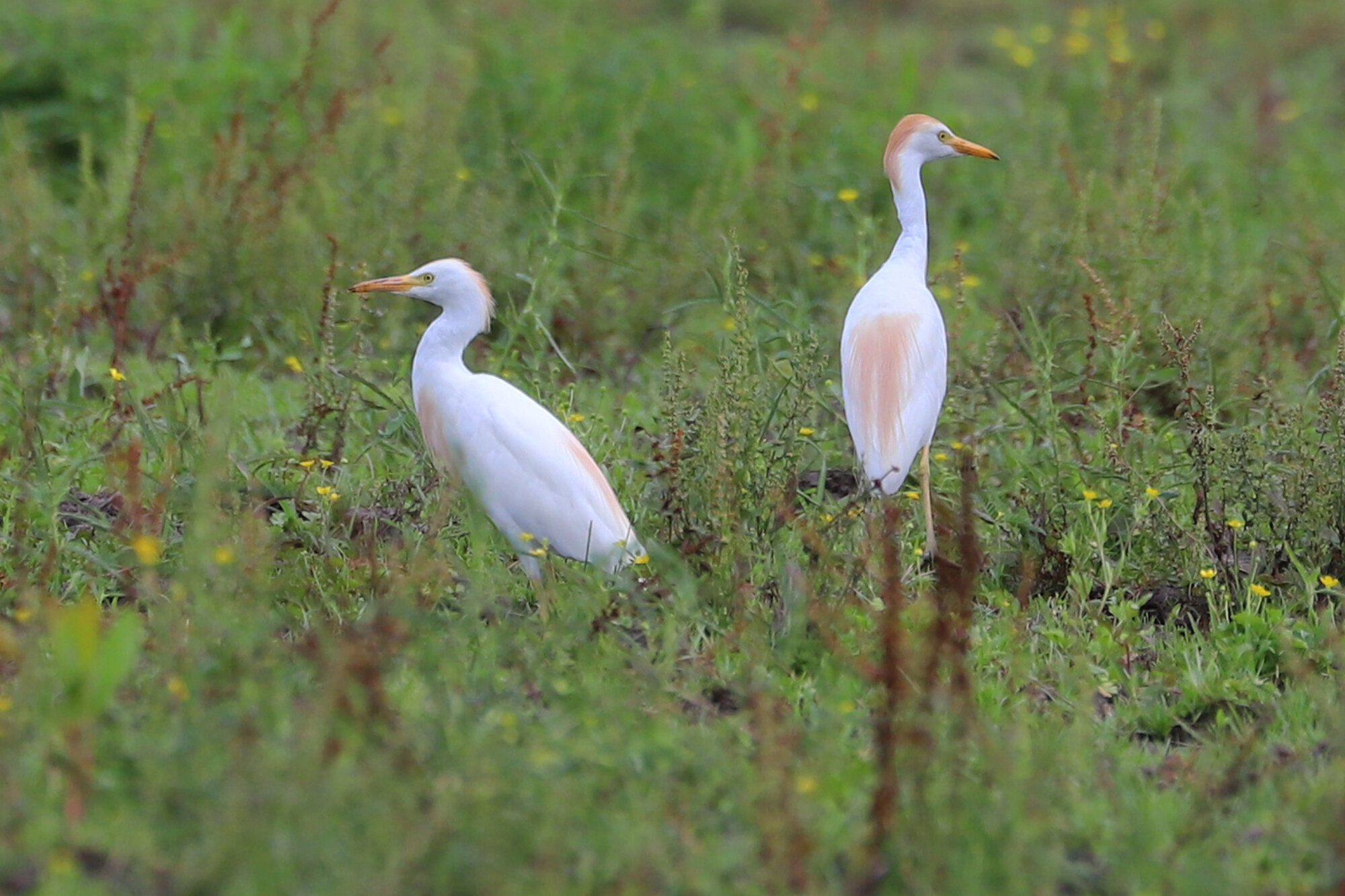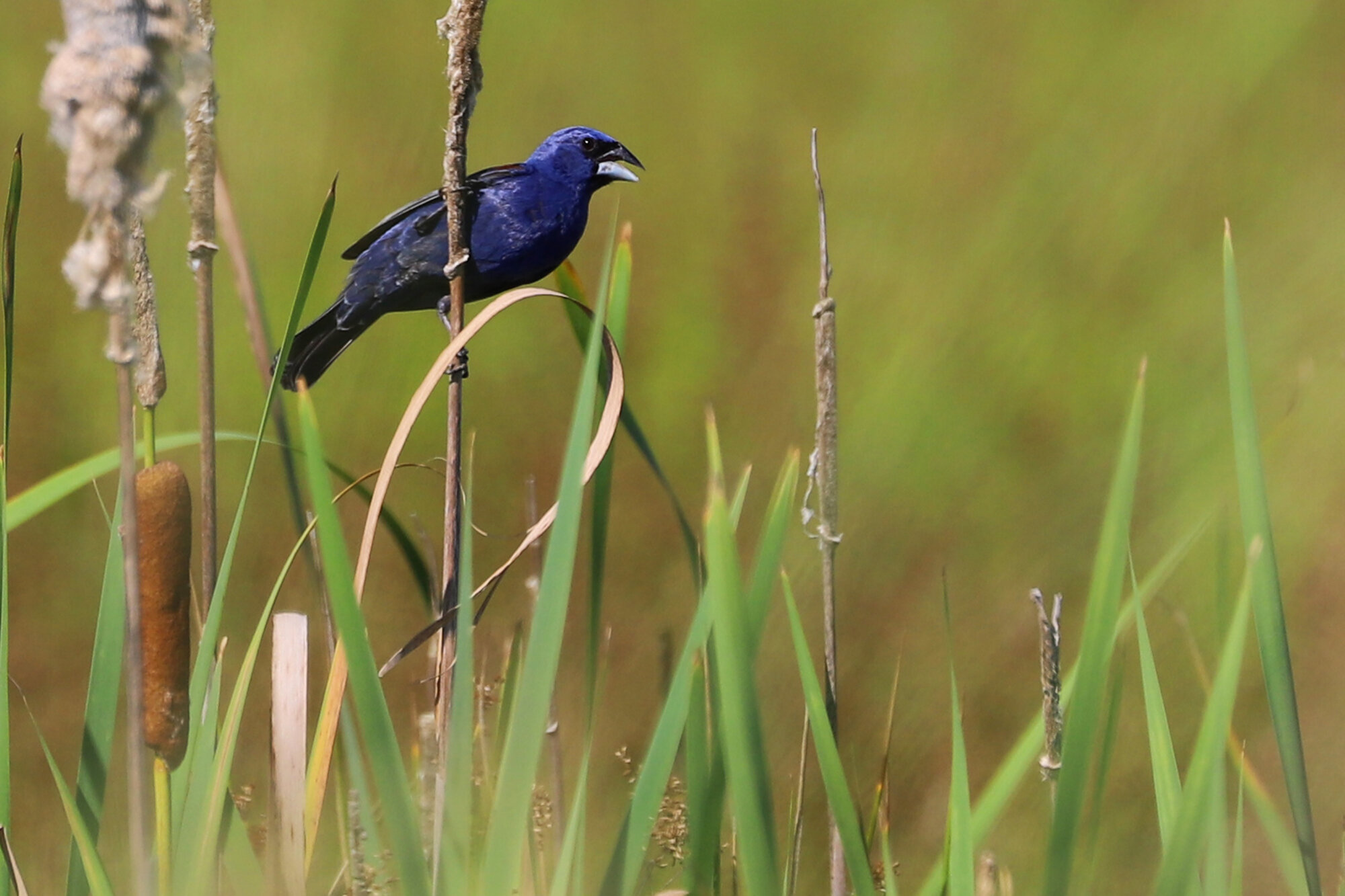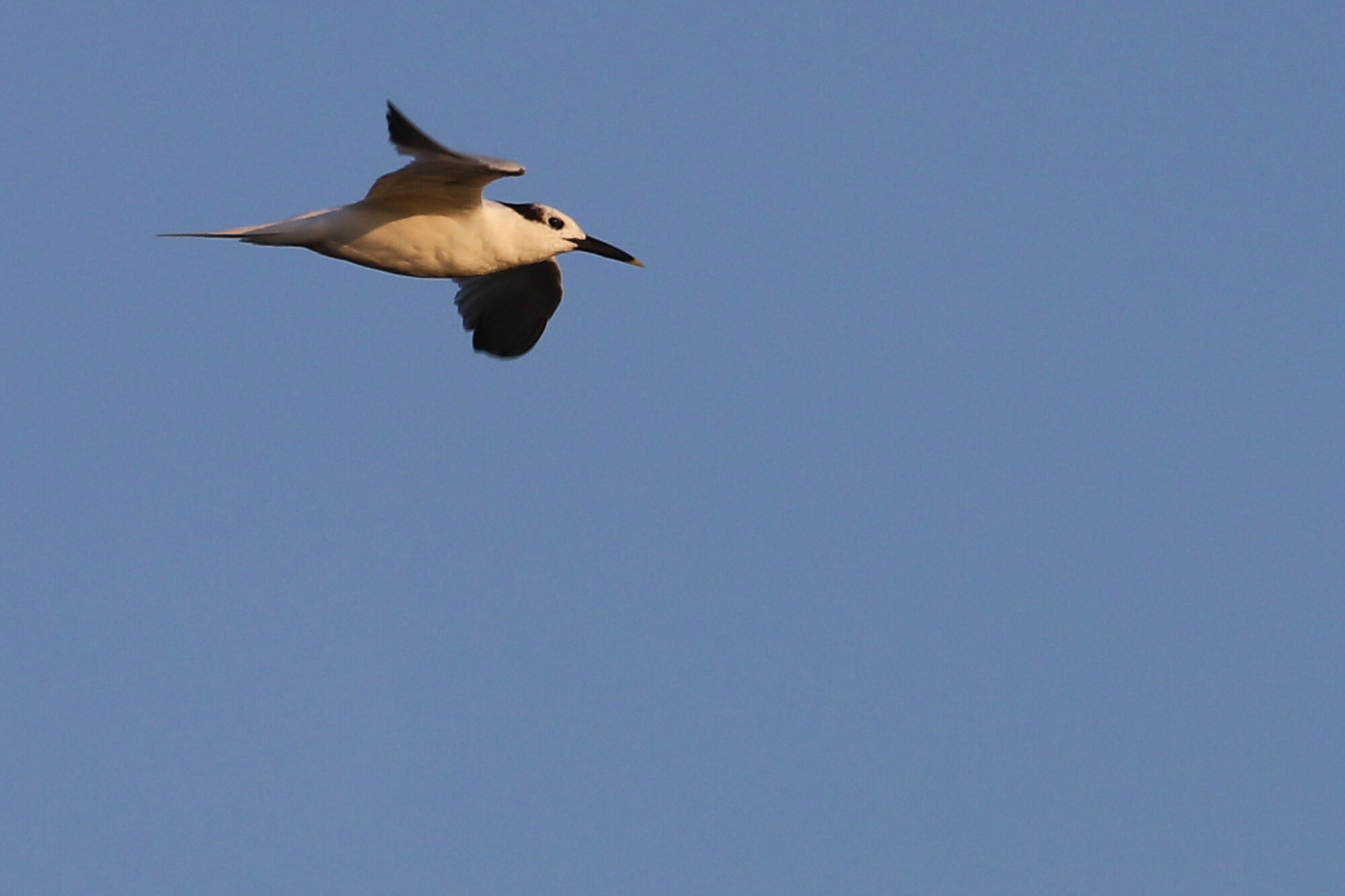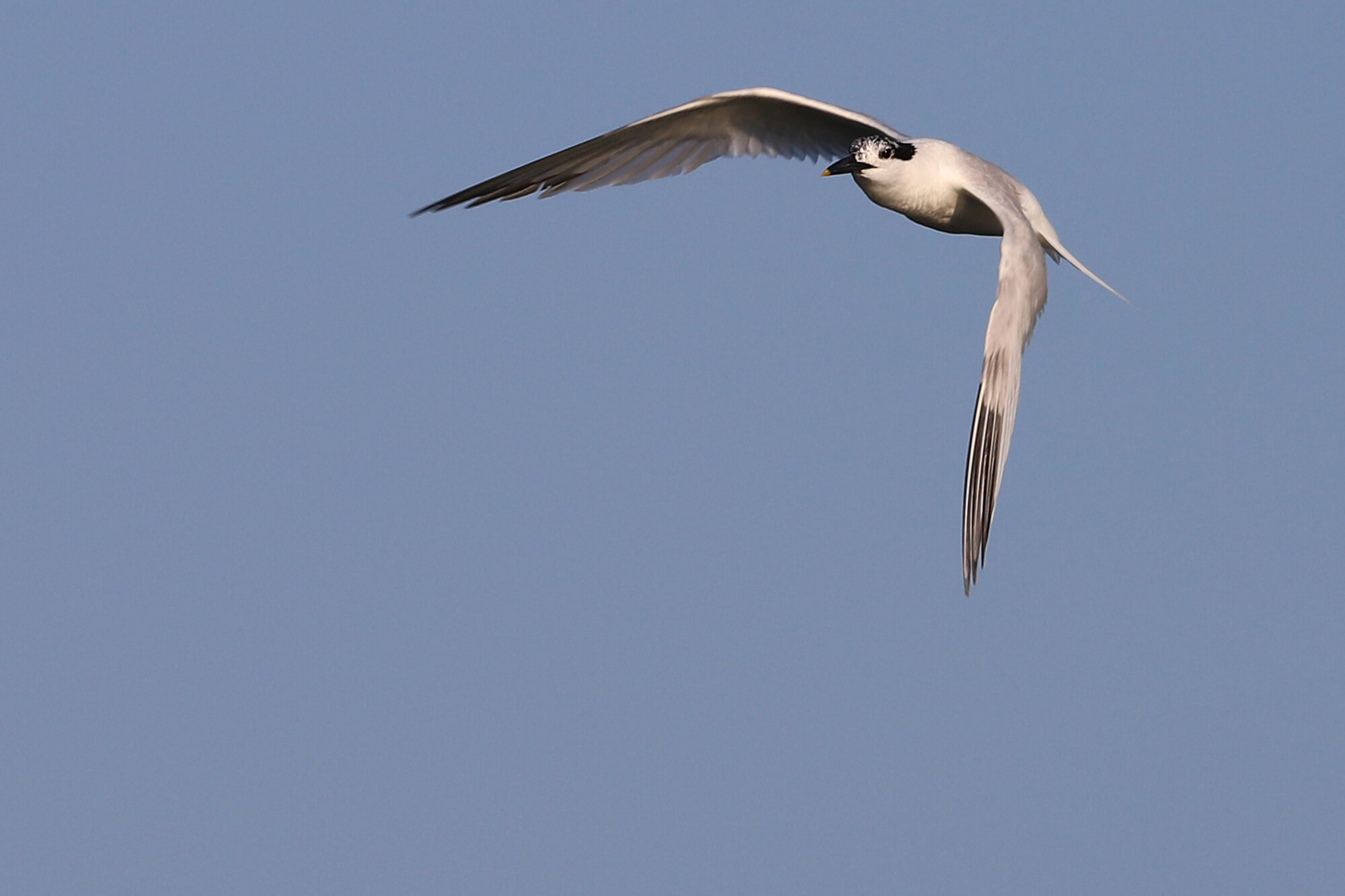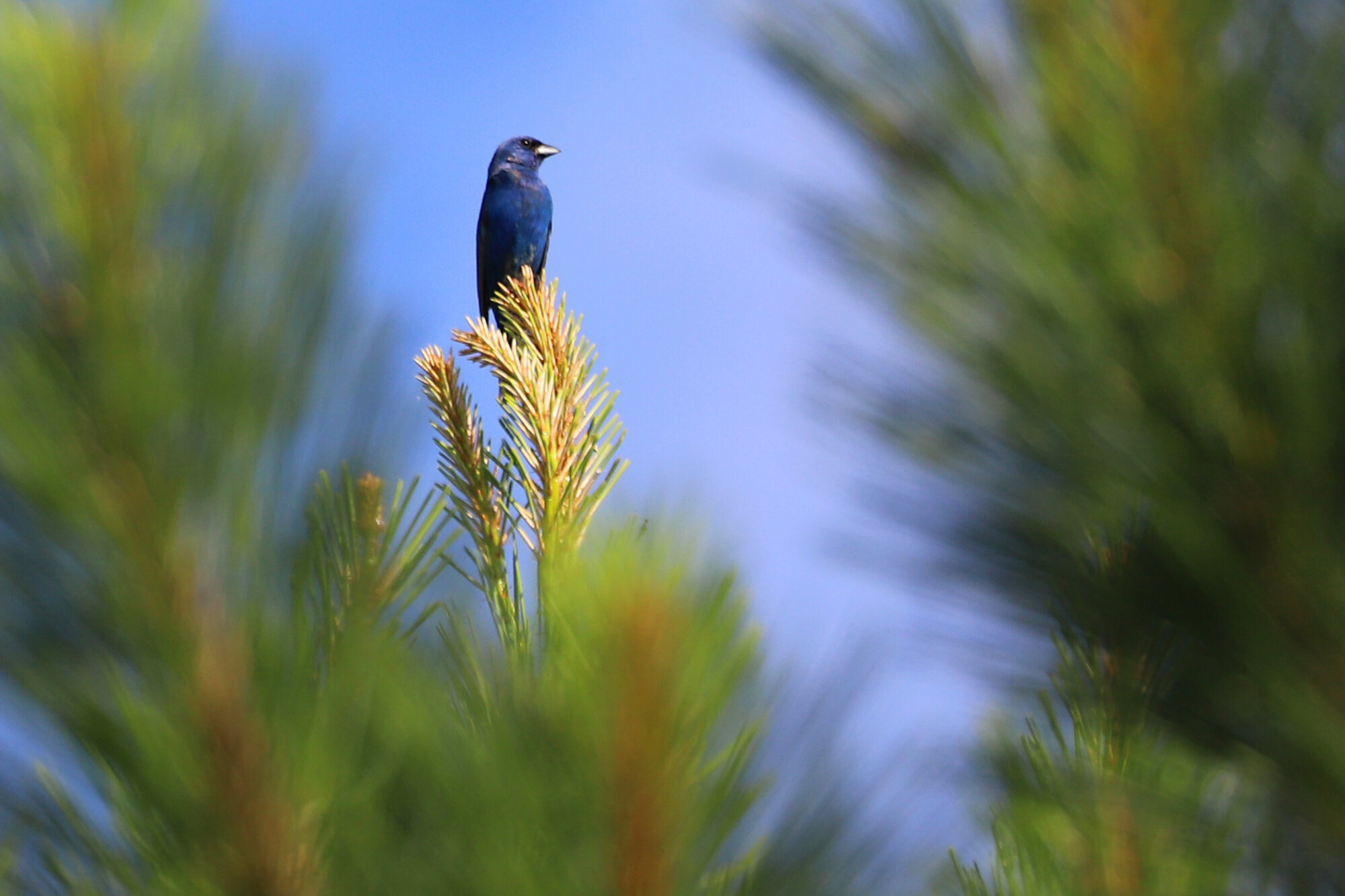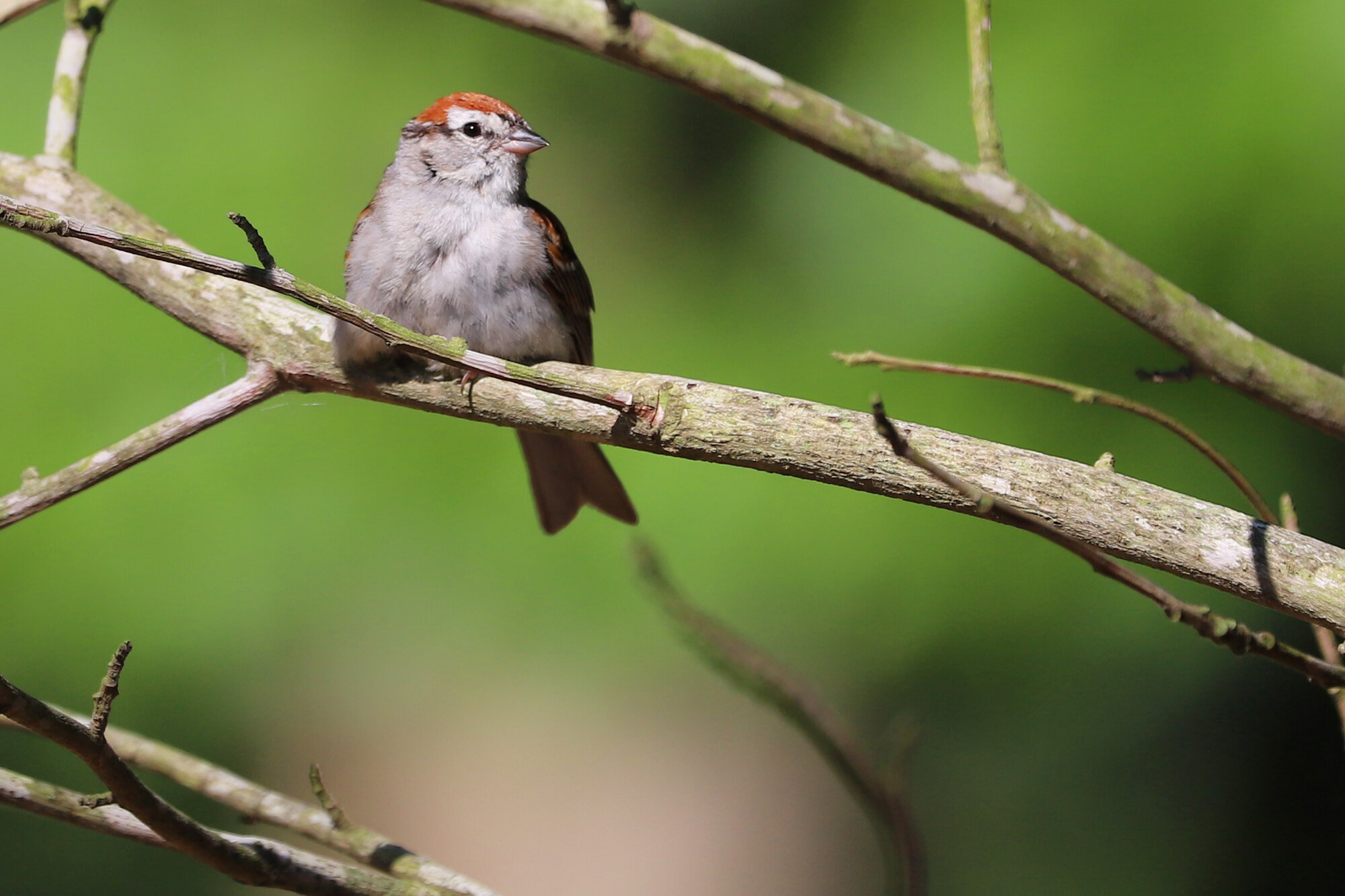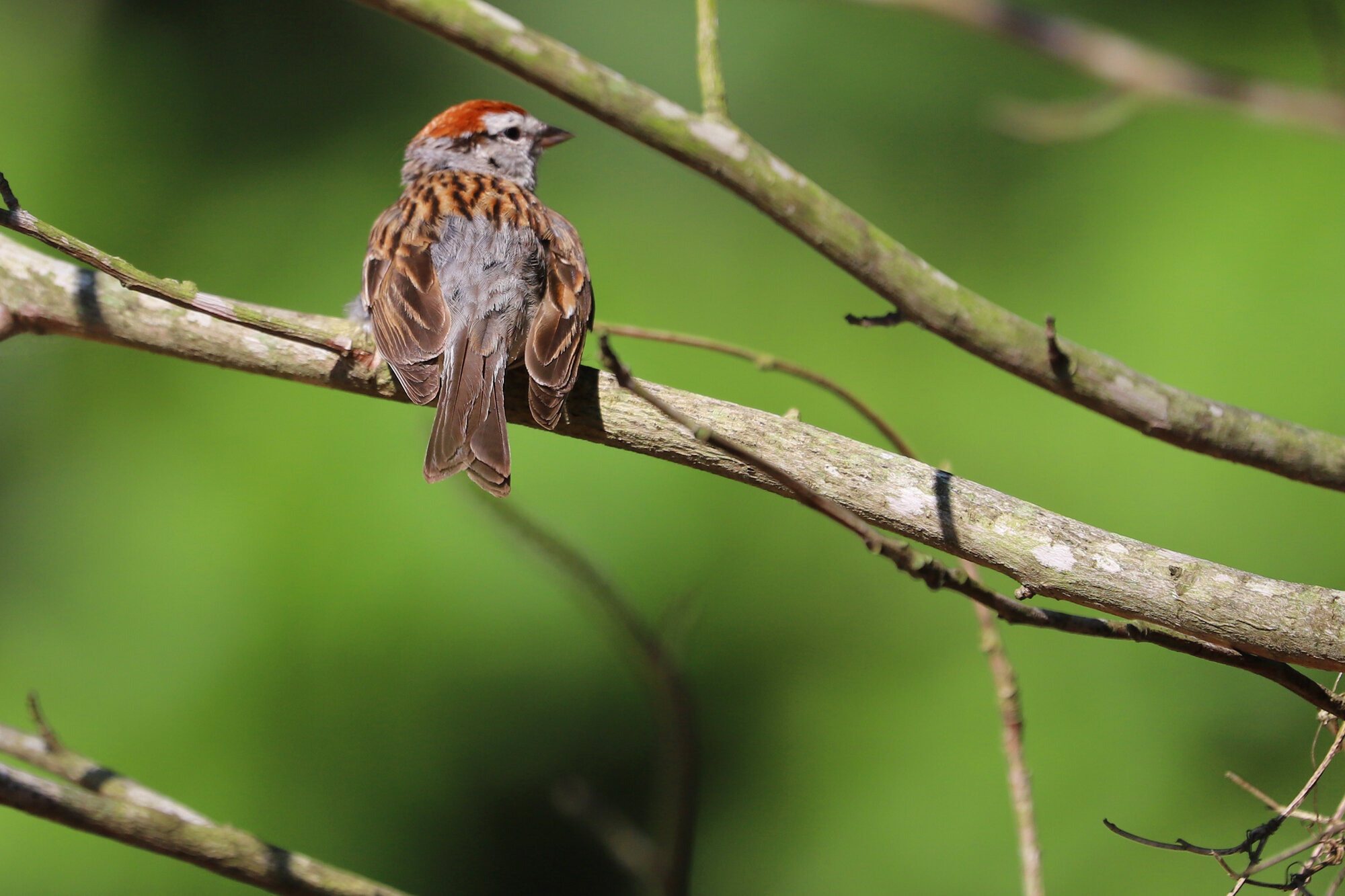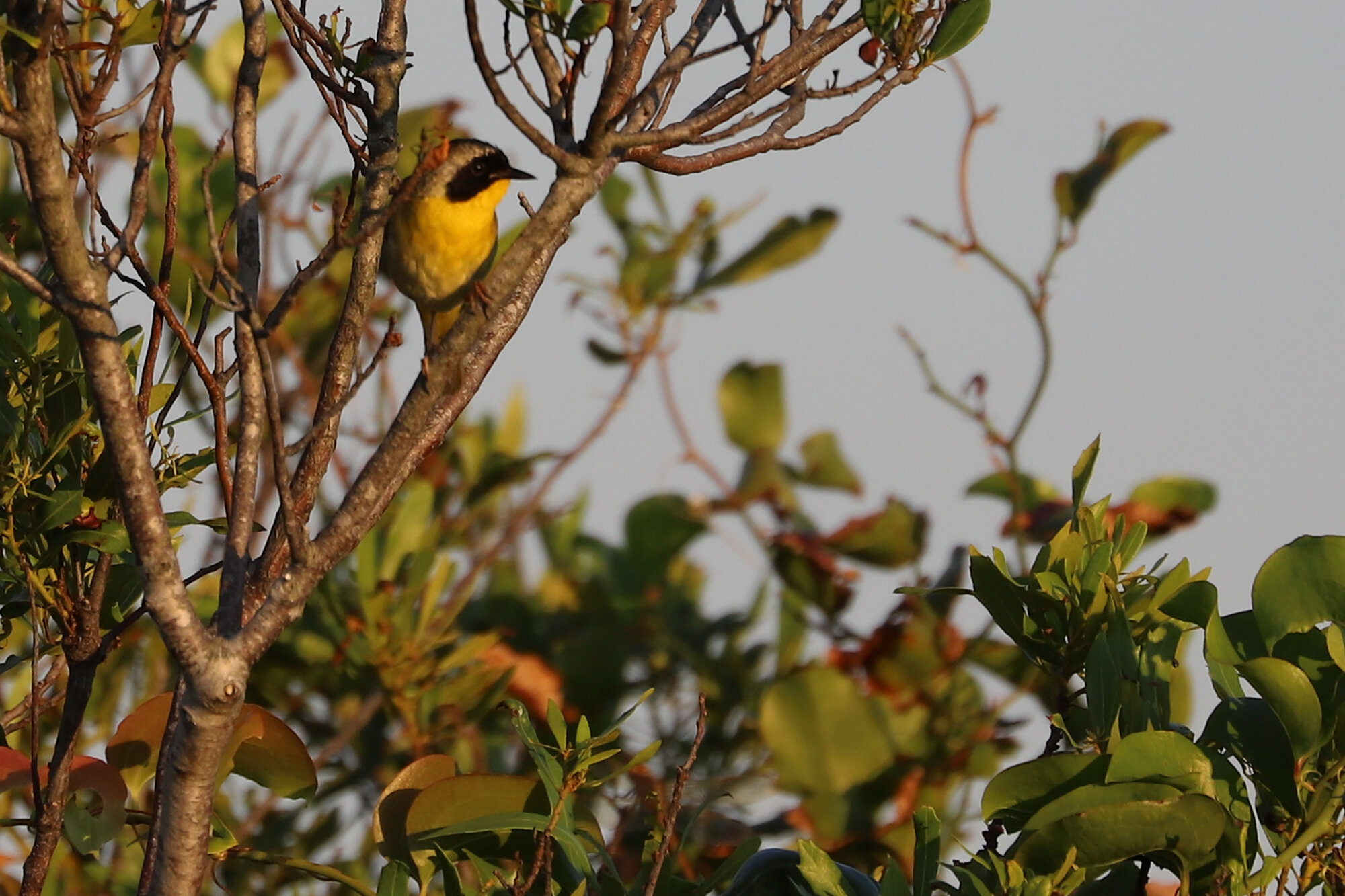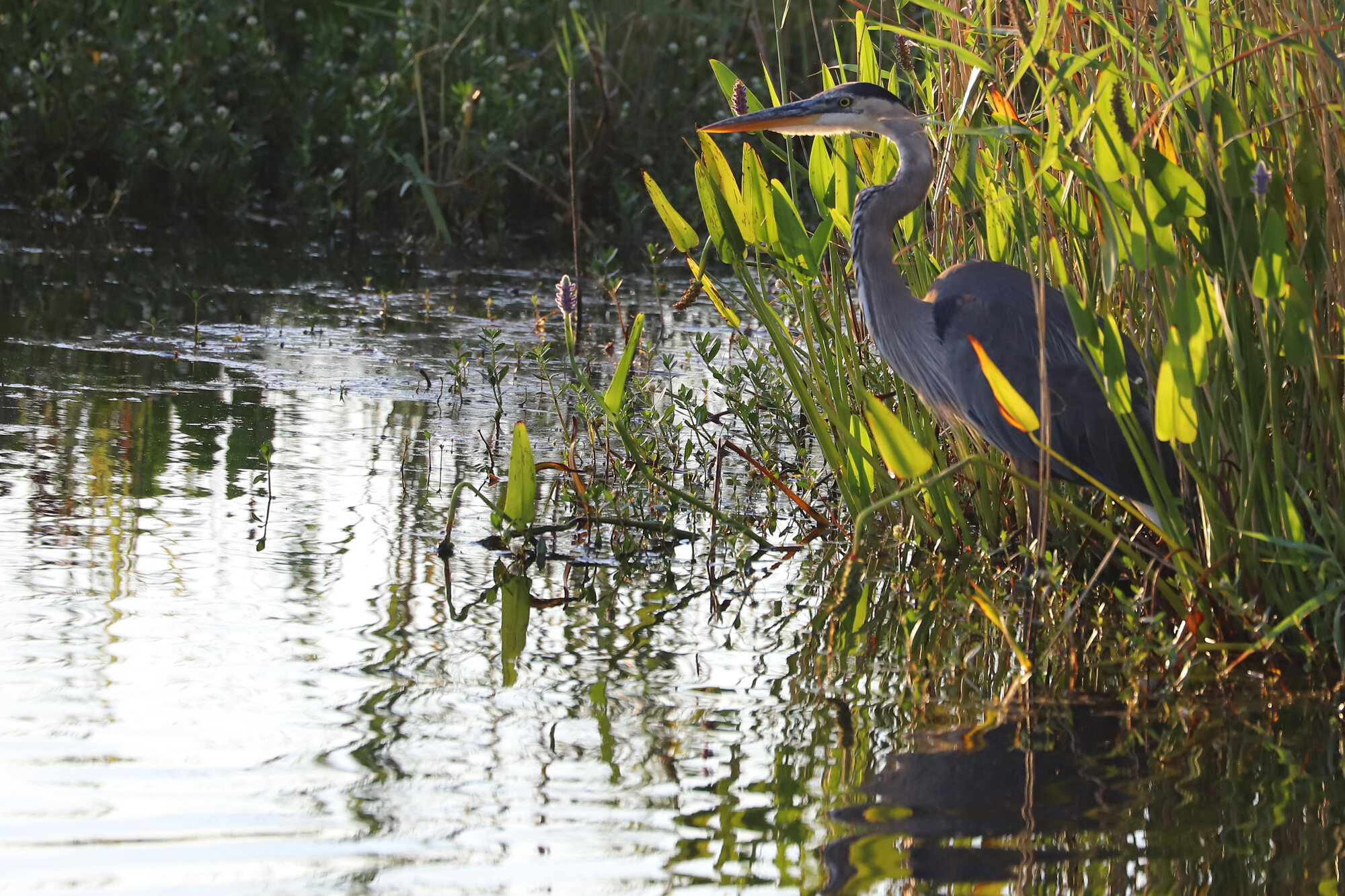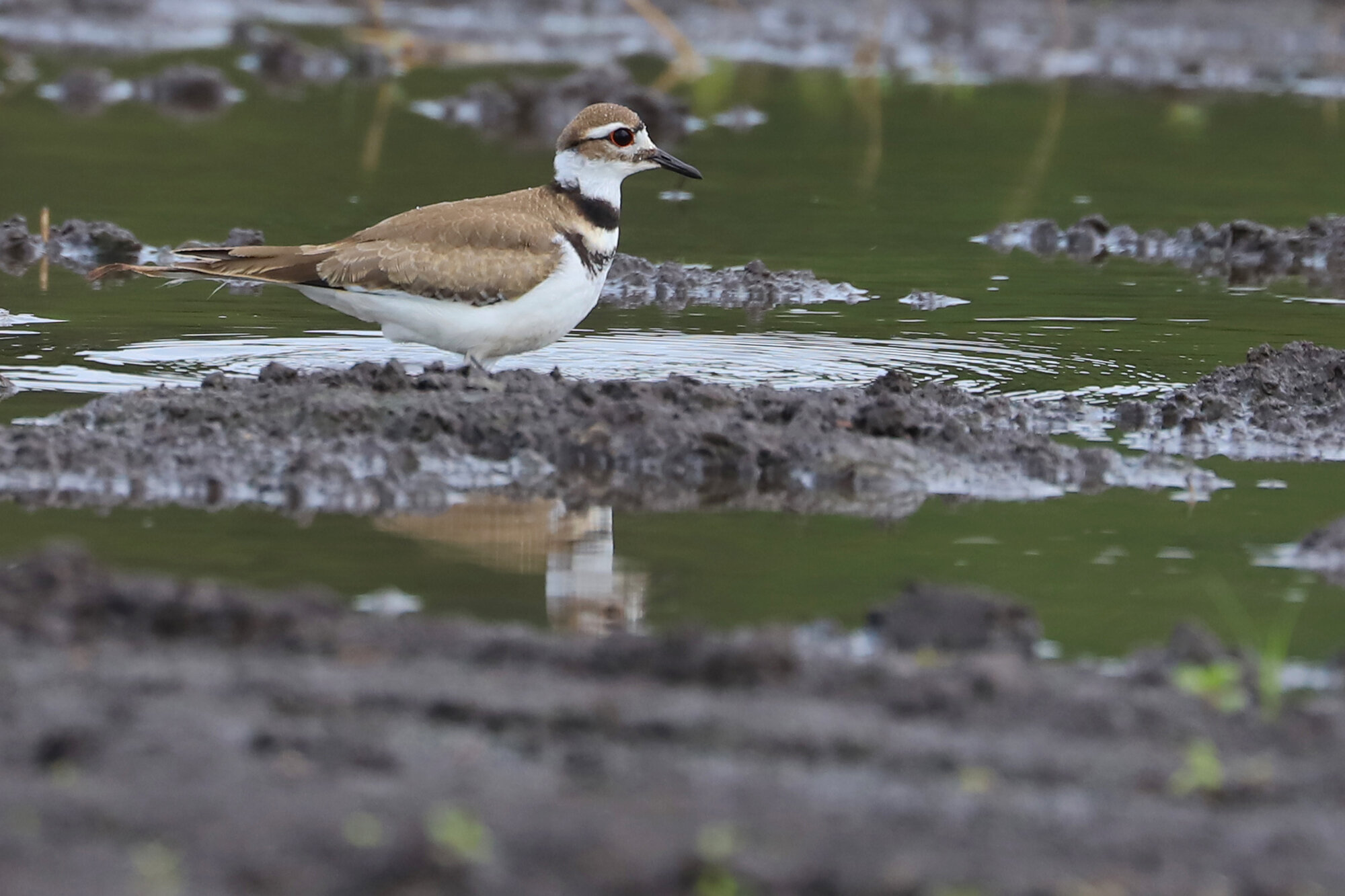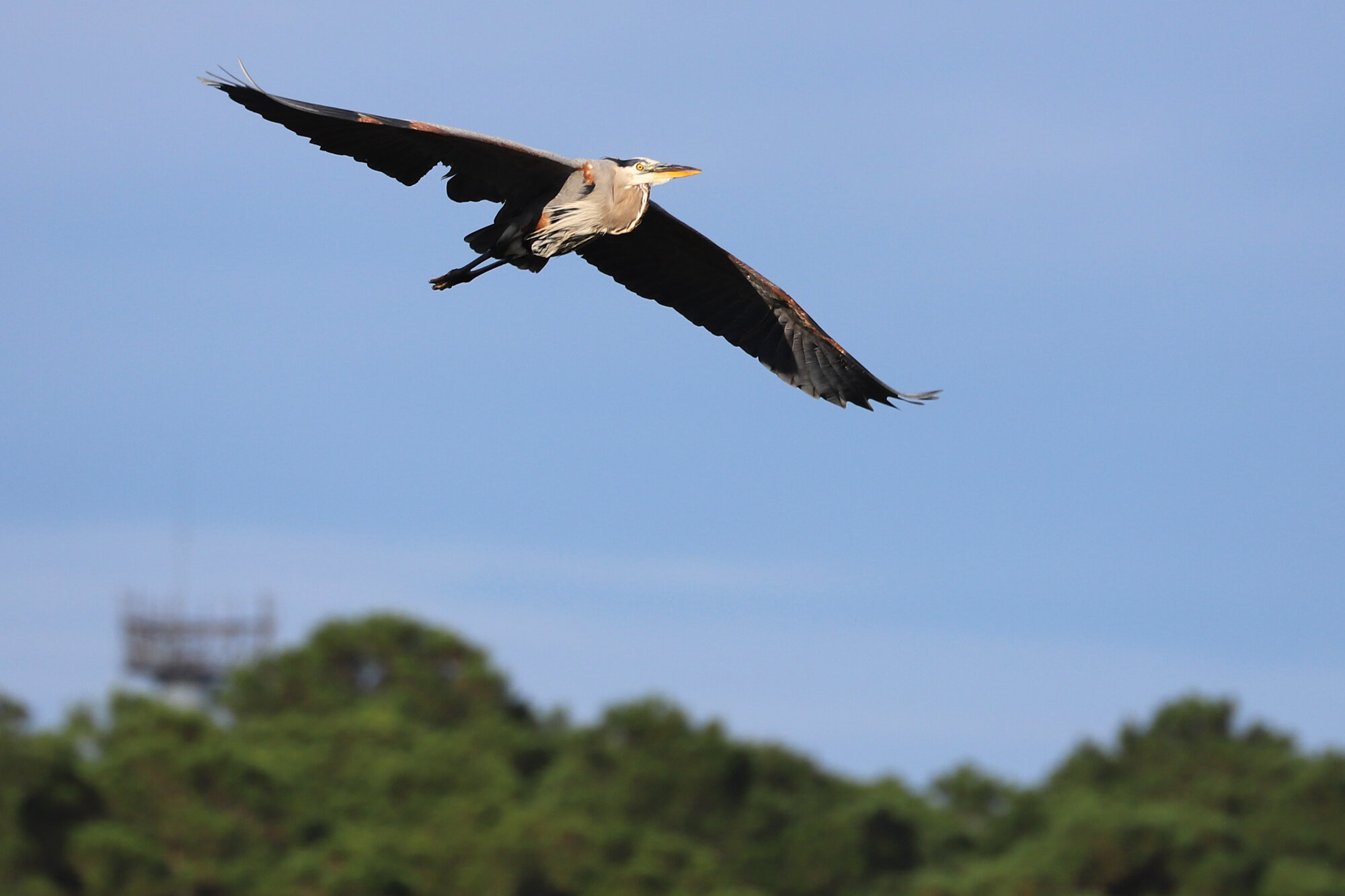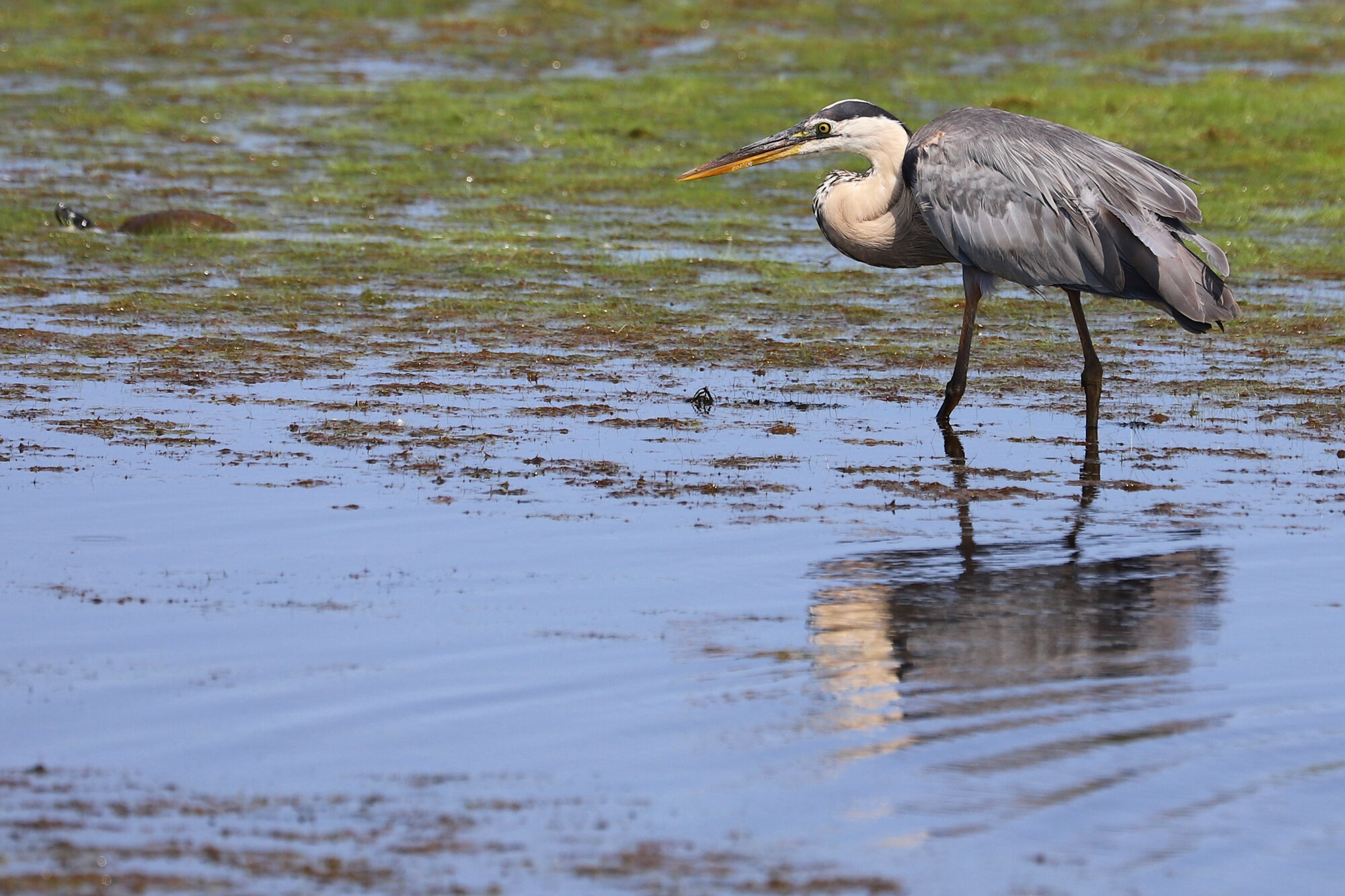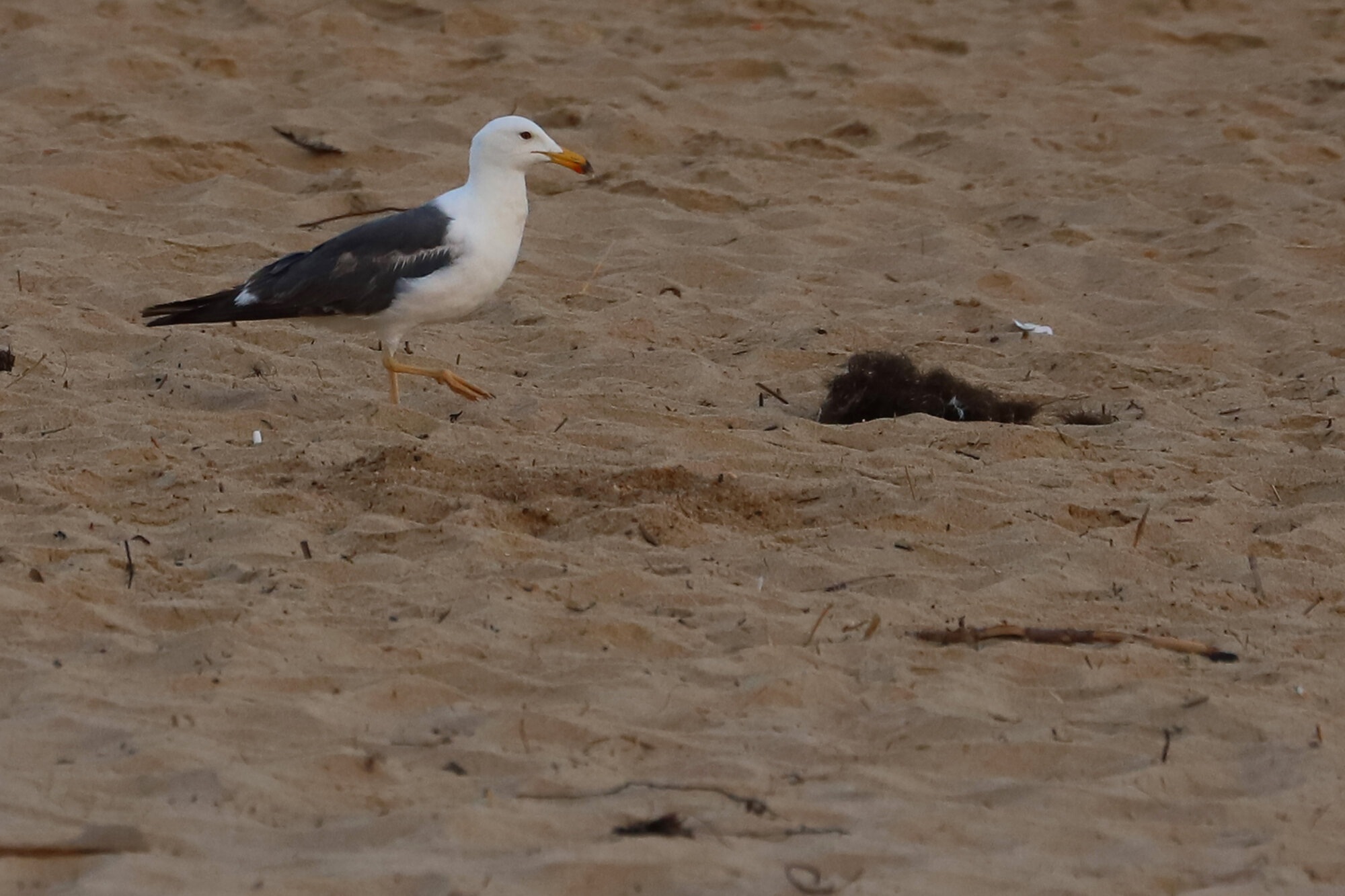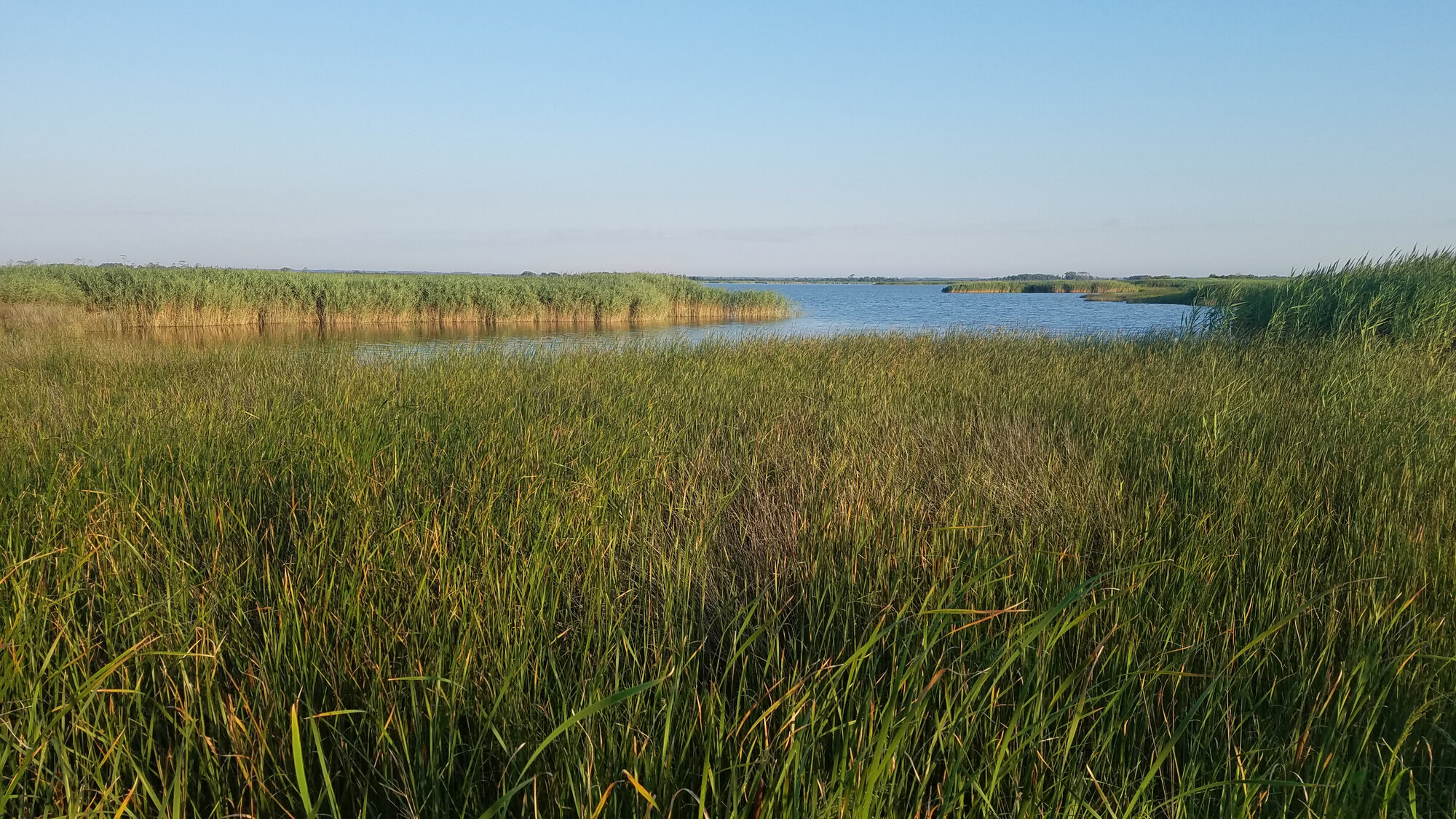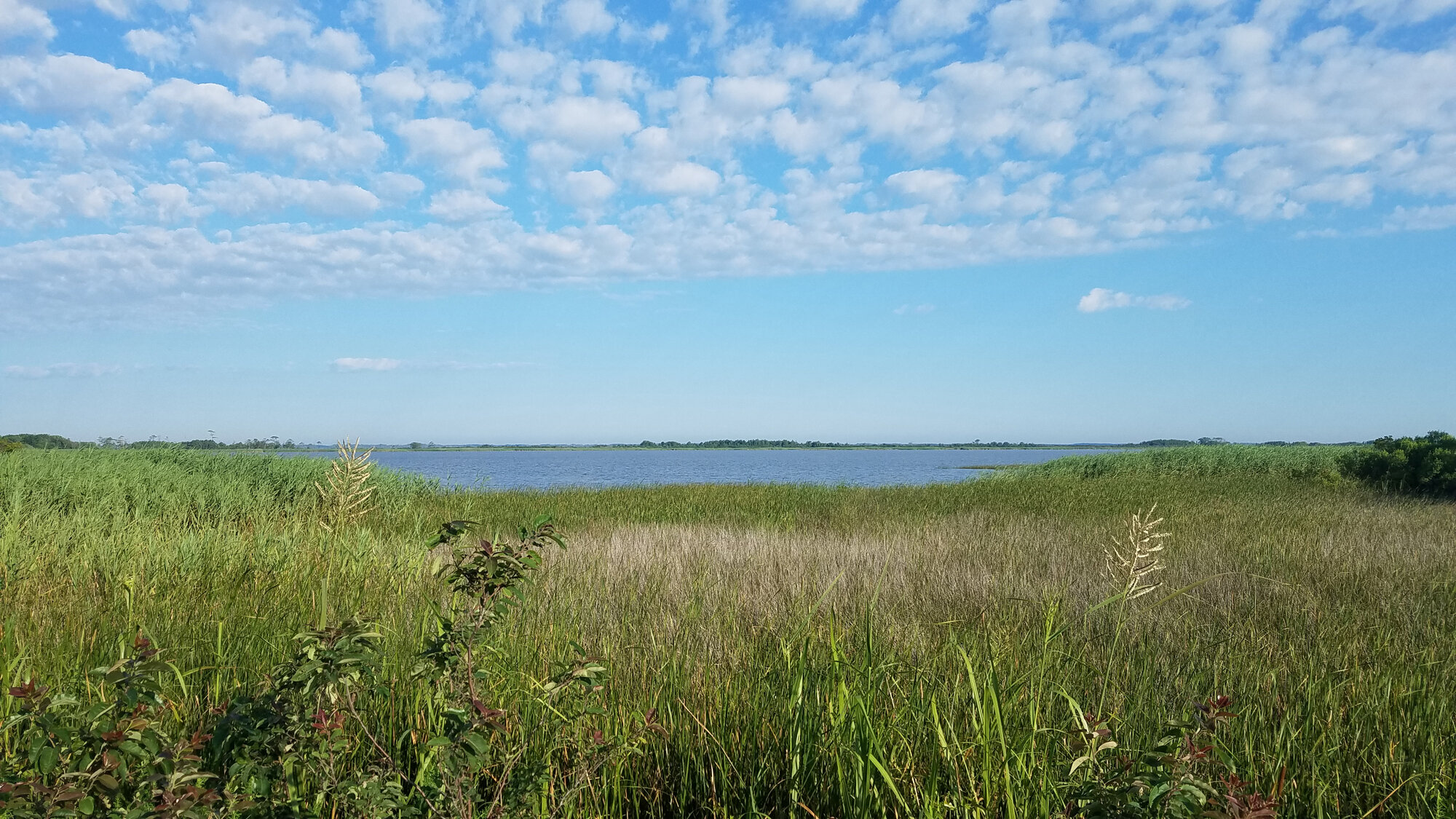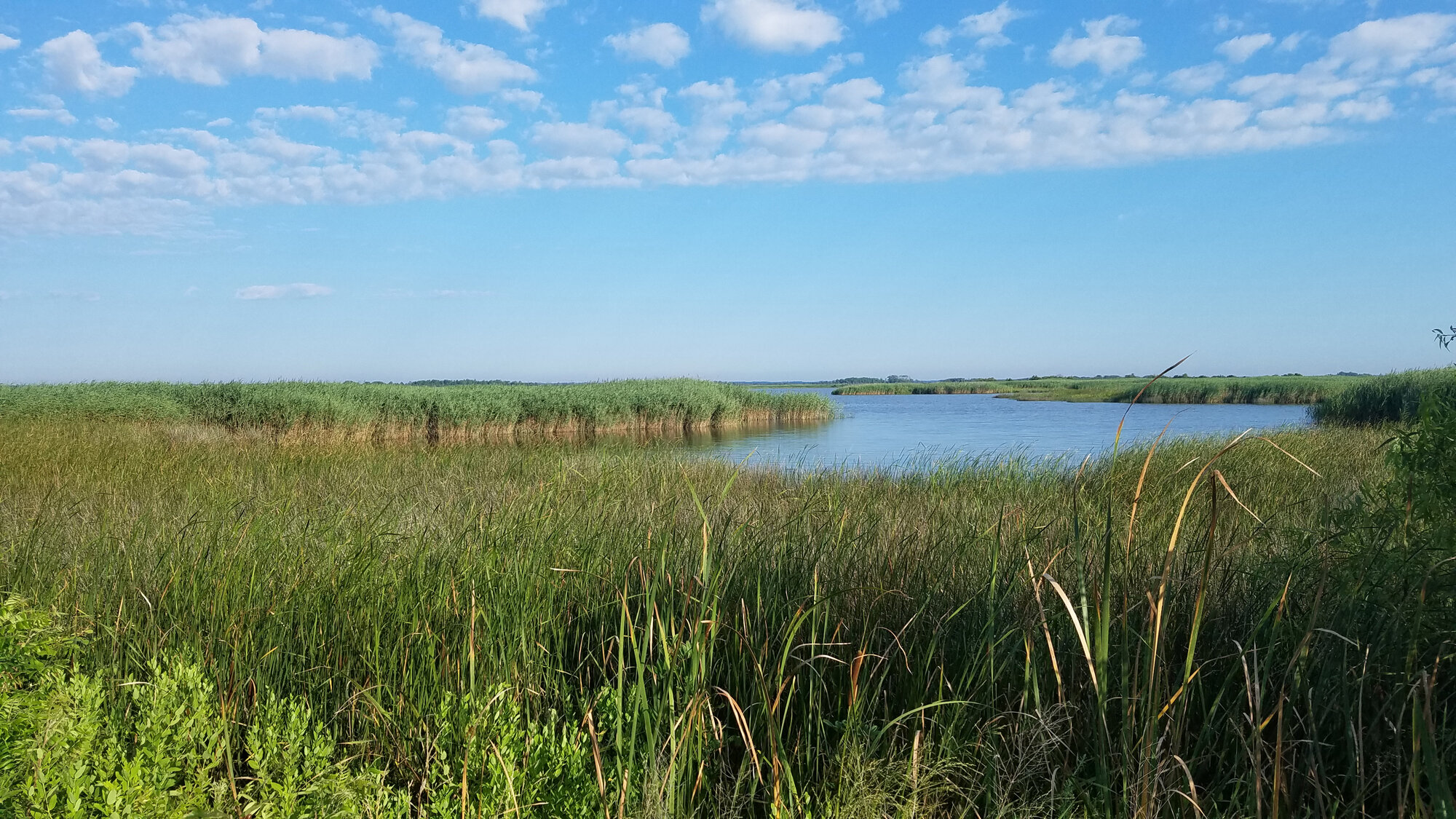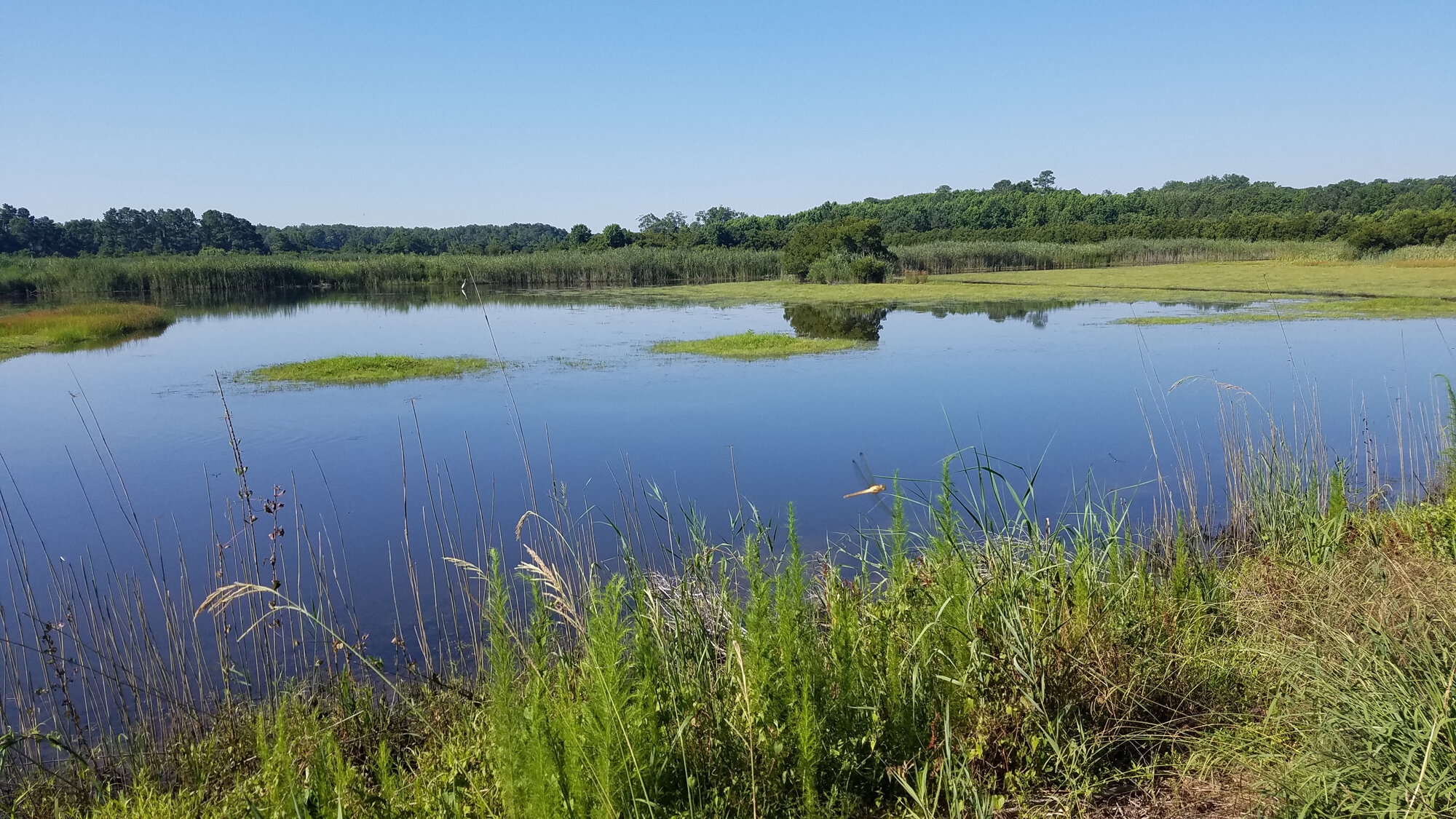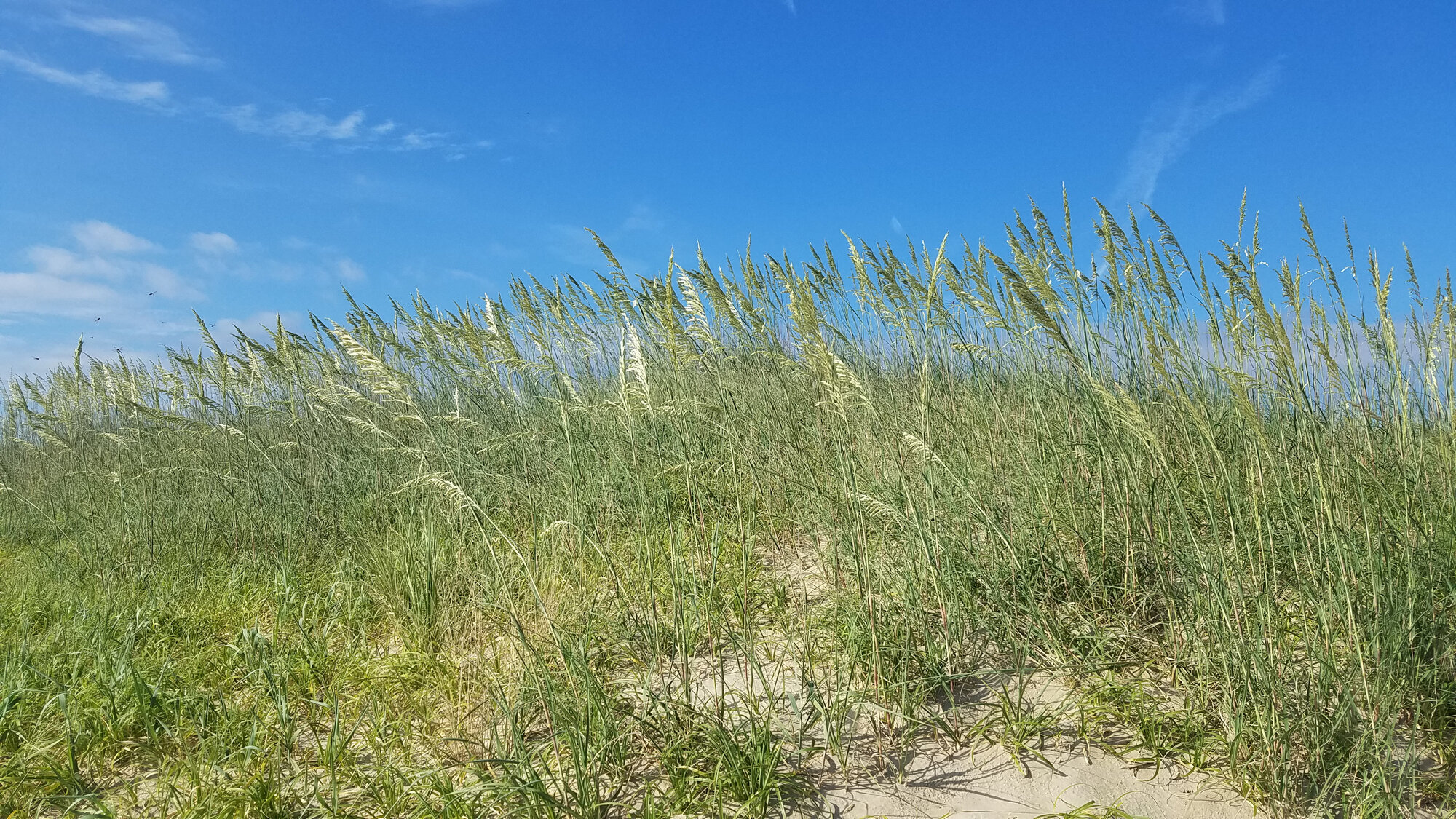October 2020
/The good passerine fortunes provided by the final week of September spilled over into October, and that momentum kept things truly exciting here throughout the month. Bolstered by not just one, but two new state firsts, a couple of strong cold front movements, a pair of pelagic outings led by Rudee Tours, and an explosion in waterfowl at month’s end thanks to former-Hurricane Zeta, this proved to be our best October thus far in terms of diversity of species entered to eBird. Weather-wise, October was right about an average month (74°F/59°F for daily highs/lows), when looking at the prior ten-year average temperatures (73°F/56°F), and we never even approached last October’s high of 93°F, fortunately! Throughout the month, we ranged from a high of 84°F on 1, 7, 24 & 29 Oct (the latest of which was a new record high temperature at Norfolk International Airport) to a low of 47°F on the final day of the month as strong northwesterly winds on the backside of Zeta funneled towards the coast. The last time we felt a matching temperature in Virginia Beach was back on the morning of 13 May, and one needs to go back to 9 May for a colder measurement (43°F). Bird-wise, over the course of its thirty-one days, a total of 220 species produced accepted records in eBird during October. This proved to be an almost shocking improvement over the 201 species logged here in September, as well as to other recent Octobers, like the 199 species logged in 2019 and the 201 in 2018. This was clearly our most successful October ever in terms of eBird reporting. For the calendar year, we now stand at 304 species, which is five higher than the 299 species logged through the same period last year. Amazingly, 292 of those species have photographic records accompanying them in eBird, which sets a new high mark for the city after eclipsing the 287 species photographed in 2019. Also notable, as an eBird community, we have now photographed more species this year than we logged in total during 2018! Collectively, eBirders have now submitted a total of 8,152 complete checklists for the calendar year which, has us slightly behind the pace required to match the 10,061 checklists submitted in 2019.
Highlights for October included: Harlequin Duck, White-winged Scoter, Wild Turkey, Ruby-throated Hummingbird, Virginia Rail, Common Gallinule, American Golden-Plover, Hudsonian Godwit, Long-billed Dowitcher, Red-throated Loon, Masked Booby, Great Cormorant, American White Pelican, Alder Flycatcher, Philadelphia Vireo, Purple Finch, Pine Siskin, Clay-colored Sparrow, Lark Sparrow, White-crowned Sparrow, Nelson’s Sparrow, Saltmarsh Sparrow, Lincoln’s Sparrow, Northern Waterthrush, Tennessee Warbler, Virginia’s Warbler, Hooded Warbler, Northern Parula, Blackburnian Warbler, Yellow-throated Warbler, Canada Warbler, Western Tanager, Painted Bunting, Dickcissel. Please note that a listing of which species qualify for the highlights section can be found here. Additionally, October provided the city with first-of-season records for expected fall arrivals which, in order of arrival date, included: American Coot, Hermit Thrush, Ruby-crowned Kinglet, Worm-eating Warbler, Brown Creeper, Winter Wren, White-throated Sparrow, Swamp Sparrow, Orange-crowned Warbler, Golden-crowned Kinglet, Gray-cheeked Thrush, Nelson’s Sparrow, American Bittern, Dark-eyed Junco, Black Scoter, Northern Gannet, Surf Scoter, Sora, Red-throated Loon, Bonaparte’s Gull, Hooded Merganser, Tundra Swan, Snow Goose, Lesser Scaup, White-winged Scoter, Common Eider, Bufflehead, Greater Scaup, Red-breasted Merganser. A full list of regularly-occurring species and their expected fall arrival dates can be found here.
Rare anywhere in Virginia away from the Chesapeake Bay Bridge-Tunnel islands, a drake HARLEQUIN DUCK in southbound flight past Little Island Park on 31 Oct (vis. Andrew Baldelli) provided an excellent record for the city this month! We may see one or two inshore strays in any given fall to spring cycle, but Harlequin Duck remains a highly sought after species in the state, especially from land. Migrants are hardly ever detected, and most records tend to be of individuals who set up a wintering territory around Little Island Park’s pier, at Rudee Inlet, or around Lynnhaven Inlet. Widely known for their preference for fast moving currents and rocky shorelines, Harlequin Ducks probably feel a bit out of place in most coastal portions of Virginia Beach, given the sandy shorelines and slow currents. However, around inlets and piers, the currents are stronger, and they seem to find a small patch of habitat to call their own around such locations. In the last fall to spring cycle, we had a female Harlequin Duck present at Little Island Park, from 19 Dec 2019 (ph. Luke Fultz) through 19 Mar 2020 (ph. Steve Keith), and possibly a separate, or the same individual was at Rudee Inlet from 25 Oct (ph. Andrew Baldelli) through 18 Nov (ph. Aylett Lipford). For one day only, a drake was present at First Landing SP on 6 Dec (ph. June McDaniels), foraging around the fish pilings offshore (which also enhance the tidal current like inlets & piers do). Perhaps with this first record of the 2020-21 cycle under our belts, we’ll have a shot at adding one or two more individuals over the coming months. (Oct 2020 Map of Records)
Though within the expected fall arrival timeframe, a pair of WHITE-WINGED SCOTERS photographed on Sherwood Lakes on 30 Oct (ph. Karen & Tom Beatty) were notably far away from their more typical, coastal habitat here in Virginia Beach! The least common of the three scoter species in Virginia Beach, even during the proper seasonal windows, White-winged is extremely scarce inland here, and incredibly this White-winged Scoter made for only the second such record in eBird! The only prior inland, freshwater record for White-winged Scoter also occurred at Sherwood Lakes, back on 2 Feb 2019 (ph. Charlie Bruggemann). Of course, all scoters are overland migrants, since they breed across northern Canada and Alaska before moving south and towards the Great Lakes or the coastlines, but it takes a weather event to dump them out of the sky during the transience and onto bodies of freshwater. Found on a day that featured 20+mph northwesterly winds as a direct result of the backside spin off a remnant low pressure cell (formerly Hurricane Zeta), it seems that this report signaled the beginning of a larger scale influx of waterfowl into southeastern Virginia. Interestingly, this same remnant low pressure cell appeared to have been responsible for the fallout of a pair of Hudsonian Godwits east of Richmond in Henrico County on the same date, so clearly the system had to the strength to impact shorebirds & waterfowl alike. (Oct 2020 Map of Records)
Once again, WILD TURKEY has managed to find itself on the monthly Journal with a likely continuing individual having again been reported up at First Landing SP on 23 Oct (obs. Anonymous). Unusual north of Princess Anne & Sandbridge Roads in Virginia Beach, we’ve had the occasional report of isolated individuals at locations like NAS Oceana, near Red Wing Park, even at Marshview Park in prior years. However, one has been documented on and off at First Landing SP (and nearby Marina Shores; ph. June McDaniels) since at least 25 May (vis. Mike Collins). With most records for this species restricted locally to Blackwater, or southern Pungo, 2020 has proven to be a remarkable calendar year for out-of-place reporting. Similar to our treatment of Mississippi Kite here, it’s likely that populations have increased in the city over the past few years, and we’re seeing individuals dispersing to any appropriate habitat that can be found. Or, it’s also possible that maybe some of the unusual locations are representative of individual that have been released? Though, they’re all of the wild phenotype at least, rather than obvious domestics. In any case, it’s been an interesting year for Wild Turkey, and it’ll be curious to see if this one continues to be observed, maybe even through the Little Creek CBC at to close out 2020? (Oct 2020 Map of Records)
Several RUBY-THROATED HUMMINGBIRDS were still being reported in Virginia Beach as October came to a close. With a typical departure date around 20 Oct, it came as a surprise that one individual was reported at a Kings Grant private residence on 31 Oct (vis. Cathy Williamson) and at least two individuals were still hanging around the same date at another private residence in Laurel Cove (vis. Loretta Silvia). Lingerers in Virginia Beach during the late fall and early winter seasons are somewhat expected in the current times, but anyone in the city (and the state for that matter) who sees a hummingbird this time of year should be prepared to carefully document the individual, with photographs if at all possible. Western vagrants tend to show up in October to the East Coast states, and already Virginia has had photographically-documented records for Black-chinned, Rufous and Calliope Hummingbirds in various locations scattered around the state. Any of these, and others like Allen’s, Anna’s, or basically anything since most North American hummingbirds have some degree of vagrancy, could show up in Virginia Beach. We sit in the best possible location in the state for such occurrences, with warmer temperatures that can keep hummingbirds alive through more winters, and with wide expanses of suburbia where feeders are plentiful. November could be an interesting month for hummingbirds, so please, stand ready and document any sighting to the best of your ability. (Oct 2020 Map of Records)
During extremely high tides causeway by strong northerly winds, a VIRGINIA RAIL was briefly observed flushing from vegetation within Pleasure House Point NA’s muddy meadow (south of the east end of Marlin Bay Drive) on 17 Oct (vis. Andrew Baldelli). Records for this species in Virginia Beach are typically limited to the areas around Back Bay, though occasionally migrants pop up in strange places following severe weather. Pleasure House Point’s shorelines are dominated by Clapper Rails year-round, and this is the first documented sight report for a Virginia Rail at this location to be input to eBird. With rails on the move right now, it’s possible others pop up in other unexpected places, but traditionally, the easiest places to detect this species remain Little Island Park, Back Bay NWR, and roads along the western Back Bay shore that reach out into the marshes (Horn Point Rd., Mill Landing Rd., Campbell’s Landing Rd.). (Oct 2020 Map of Records)
Secretive, but likely present at Back Bay NWR throughout the year, we had at least one, possibly two, COMMON GALLINULE this month at the refuge with the first recorded 3 Oct (ph. K Cook & Diane Girgente), and the second record during the impoundment survey on 5 Oct (ph. Edward Brinkley, Cindy Hamilton & Lauren Mowbray). Recorded most often during spring migration from mid-April through late May, fall records tend to be pretty scarce for this species in Virginia Beach. Winterers are detected about annually at Mackay NWR to our south in North Carolina, and one would suspect that individuals are present around the shorelines of Back Bay on the Virginia side, as well as in vegetated impoundments. At least, during warmer fall & winter seasons when the water remains fully ice-free. In Virginia as a whole, only one other Common Gallinule was recorded during October, with an immature at the Cheriton Landfill in Northampton County on 17 Oct. (Oct 2020 Map of Records)
Surprisingly, we had a trifecta of rare, fall transient shorebirds noted during October at the exact same location where each was first observed during September. While an individual AMERICAN GOLDEN PLOVER was first observed on the C Storage Pool at Back Bay NWR on 23 Sep (vis. Andrew Baldelli & Kyle Bixler) through 26 Sep, at least three were reported at this location during the refuge’s official impoundment survey on 5 Oct (obs. Edward Brinkley, Cindy Hamilton & Lauren Mowbray). This is the first time since the fall 2017 season when we’ve had reports of more than one American Golden-Plover, and that record also occurred at the C Storage Pool. Unfortunately, the cross dikes that would yield good views of these shorebirds are not open to the public, and in October, the views from the East Dike do not afford much clarity. So these individuals tend to pop up during the official refuge surveys, but generally aren’t identifiable at this range, even if they’re in view by scoping from the East Dike. However, they are still worth checking for from the public areas of the refuge, as a Peregrine Falcon or other raptor can easily spook the birds into flight, and there are other locations where they could land, like H Pool. (Oct 2020 Map of Records)
The second rare shorebird to linger into October was the HUDSONIAN GODWIT first found on the C Storage Pool on 24 Sep (ph. Kieran Zwirner fide Lauren Mowbray), and subsequently observed by scoping through 26 Sep. Unlike the aforementioned American Golden-Plover(s), this Hudsonian Godwit is a large enough species where it could be picked up with enough clarity from the East Dike to make it a more twitchable entity. During October, it was observed during the same impoundment survey trio (vis. Edward Brinkley, Cindy Hamilton & Lauren Mowbray) on the same date, viewed from the cross dikes with refuge permission to do so. Last October, we finally ticked our first Hudsonian Godwit in eBird with an individual found at Princess Anne WMA Whitehurst Tract on 6 Oct (ph. Andrew Baldelli), though, there are likely past records out there that haven’t made it to eBird yet. But October seems to be our best month for this species. This is still a very rare fall transient through the city (and the state), so it did not come as much of a surprise that no others popped up locally this month. In fact, the only other Hudsonian Godwits recorded in Virginia this fall season (so far) were an individual on the Wash Flats at Chincoteague NWR on 9 Oct (ph. Joanne Laskowski) and a pair downed by former Hurricane Zeta in Henrico County on 30 Oct (ph. Allen Bryan). Interestingly, only a single record in the Outer Banks of North Carolina was farther south along the coast than the Virginia records this month. While it is not unheard of on the East Coast in November, if we do see any further records for Hudsonian Godwit between now and next fall, it would come as quite a welcome surprise. (Oct 2020 Map of Records)
Last of the trio of shorebird rarities, the initial pair of LONG-BILLED DOWITCHERS found on the C Storage Pool at Back Bay NWR on 25 Sep (vis. & aud. Kathy Louthan & Wes Teets) rose to a 6-count on 26 Sep, and then an individual was reported on 15 Oct (vis. Edward Brinkley), on 20 Oct (ph. Lauren Mowbray) and on 26 Oct (vis. Robert Ake) at this same location. At a certain point in the fall, which we’ve likely reached by now, Long-billed Dowitcher actually becomes more expected to occur her than Short-billed Dowitcher. While the latter is significantly more common during spring and fall migration, it mostly vacates the state during winter, aside from groups in the Eastern Shore barrier island lagoon system that is. Long-billed Dowitchers have a different vocalization, usually the most obvious difference between the species if audible, and they’re significantly chunkier with a peak above the center of the back while actively foraging (Short-billed has a peak at the shoulder). Careful examination of dowitchers during November is likely to yield further records for both species, though many will be best left as slashes, with proper documentation we could see additional Long-billed Dowitcher reports before the calendar year closes out. (Oct 2020 Map of Records)
An associated record to the White-winged Scoters mentioned earlier in this Journal, a single RED-THROATED LOON was also found on the north pond at Sherwood Lakes on 30 Oct (vis. Karen & Tom Beatty) and continued through the follow day to close out the month. Like the others, this species is within its normal migration and arrival window in Virginia Beach, but inland records of this nature are quite rare. One was briefly present at this same location on 21 Feb 2020 (ph. Karen & Tom Beatty), but prior to that, one has to go back to Nov 2018 for the next record at Sherwood Lakes. It’s likely that the lake attracts this species during migration windows for the same reason it near-annually picks up Common Mergansers and has hosted at least two Pacific Loons in recent years. Crystal clear, and deep, this former borrow pit likely provides the perfect foraging habitat and food source for these diving species that prefer the same deep, clear water throughout their non-wintering ranges. While Red-throated Loon can be viewed along the coast by the thousands during the better migration mornings, this is a case of quality over quantity as seeing just one here on freshwater is a special occasion. (Oct 2020 Map of Records)
The first of a pair of new state records to occur this month in Virginia Beach, a MASKED BOOBY was photographed on the Chesapeake Bay beach of First Landing SP on 14 Oct (ph. Corinne Jolie-Wilson)! Birders here have long awaited the first record within our borders, while adjacent North Carolina churns them out annually at this point, and farther north, Maryland captured an offshore record in 2016, while New Jersey, Massachusetts and Nova Scotia also have had prior records. This individual, likely ailing or injured, was stationary on the beach and it was apparently called into a local rehabber as a possible Northern Gannet. By the time rehabbers arrived on site, the bird was nowhere to be found though. Once the sighting had been brought to the attention of the Virginia birding community via Facebook postings, it was looked for, but it had apparently already been long gone by that point. Murmurs among the birding grapevine indicate that it may have fled back out over the bay after a dog pursued it while trying to rest on the beach, which seems to align with perhaps the reason rehabbers weren’t able to find it shortly after the first sighting(s). With other reports this month in North Carolina, perhaps Virginia will get lucky and see another sooner rather than later. But, the photographic documentation here shouldn’t have any issue passing through the Virginia Avian Records Committee (VARCOM) and it has already been validated in eBird as the first state record for Virginia! Certainly, all Virginia birders are hopeful for another sighting that might provide a twitchable Masked Booby, but we can all rejoice in the state’s very first record having been documented this month! Along with one other species to be mentioned later in this Journal, as well as Scott’s Oriole & European Storm-Petrel, Virginia has added four species to its state list in 2020, quite miraculous! (Oct 2020 Map of Records)
Very similar in terms of status & distribution within Virginia Beach, a GREAT CORMORANT in transit along the beach at Back Bay NWR on 31 Oct (ph. Rob Bielawski) proved to be another exciting find away from the Chesapeake Bay Bridge-Tunnel! Flying northbound at a lumbering pace, this same individual was miraculously picked up 7-8 miles to the north at Dam Neck NA (Restricted) roughly 50 minutes later at 10:55 AM (ph. Steve Myers) and it wouldn’t be surprising at all if it may have slipped into Rudee Inlet or landed on one of the rock jetties. Just like the Harlequin Duck mentioned earlier, Great Cormorant rarely produces records from shore here, though the Chesapeake Bay mouth around First Landing SP and JEB Fort Story, as well as Rudee Inlet tend to be the most “reliable” for these rare occurrences. Most often, onshore records occur during intense storms and nor’easters, which help disperse the species away from the CBBT islands. Records at Back Bay NWR are particulary scarce though, and one needs to look all the way back to 1980 to find the most recent eBird record here! Though, Little Island Park did produce one record last cycle, records there are also few and far between. Aside from taking offshore boat trips to the islands during January & February, the best opportunities for viewing this species tend to be from the beaches immediately adjacent to the CBBT’s landing point in Chic’s Beach, namely Guy Avenue’s beach access. Further scrutiny of cormorants on the offshore jetty at Rudee Inlet would likely net us a few more records for Great Cormorant, but often times the lighting makes it very difficult here unfortunately. Hopefully we do see some more records this cycle, and it’d make for a great November find if anyone can happen upon this or another individual next month. (Oct 2020 Map of Records)
Ironically, another massive, mostly white-plumaged species, AMERICAN WHITE PELICAN, was observed for the first time this season at the same stretch of beach at First Landing SP on 13 Oct (ph. David Clark)! Spotted sometime around 11:30 AM, this flock of 53 American White Pelicans was observed heading westbound over the beach, and may have been the same flock observed flying southbound to the east of the Kiptopeke Hawkwatch the same day (vis. Karl Barden). It also feels reasonably possible that this same flock continued westward and landed at Hog Island WMA in Surry County, as a report for 46 occurred there a few days later on 18 Oct (ph. Nancy Barnhart) and 52 were reported on 21 Oct (vis. Stephen Living). Of course, there is always the potential that multiple flocks could be in transit through Virginia at the moment, but these reports line up in an interesting fashion at least. Fairly rare along our stretch of coast, but somewhat regularly reported from late fall to early spring, American White Pelican tends to be a difficult species to observe locally, as the transient flocks like this are difficult to re-locate, though occasionally they’ll land on the tidal flats in the Lynnhaven River, or on the impoundments at Back Bay NWR. But, most often, the observations are exactly like this, transient flocks moving along the coast towards a desired wintering location. So far this season, only one other record has occurred for this species in the state, with a wayward individual at Swift Creek Reservoir in Chesterfield County from 11-12 Oct (ph. Larry & Lucia Tipton). (Oct 2020 Map of Records)
Miraculous for the fall season in Virginia Beach, an apparent ALDER FLYCATCHER was extensively photographed at a private residence in Laurel Manor on 12 Oct (ph. Tommy Maloney)! An extremely rare transient along the East Coast south of Cape May, this makes for a second record in 2020 for the species in Virginia Beach, the only coastal plain location in Virginia south of Prince William County to have even one record! Up to three were observed at the Tidewater Arboretum during the major fallout event of 23 May (ph. Edward Brinkley), but this makes for our first-ever record during any fall season in eBird! During spring, differentiating between Alder & Willow Flycatchers is much more straightforward due to the differences in their songs and call notes, but Identification of Empidonax flycatchers during fall is a difficult, if not mostly impossible task, given their nature for staying silent at this point in the year. Exceedingly subtle differences in plumage details can only be picked up by seasoned experts, and even then, many individuals simply are best left as Traill’s Flycatcher (a relic combination of the two when they previously were considered to be the same species). We are fortunate in Virginia to have at least one such expert capable of taking on this challenge, and in a similar feat recently, an Alder Flycatcher in Iceland was also identified properly via photographs, and then confirmed by DNA analysis! (Oct 2020 Map of Records)
A low density migrant during the fall season, we tacked on yet another PHILADELPHIA VIREO this month, after having at least three, and perhaps four different individuals logged in Virginia Beach during September. This month’s record hailed from False Cape SP, and was observed early in the month, on 3 Oct (vis. June McDaniels). Along with a few low density, transient warblers, this proved to be our most successful fall season in terms of eBirding reporting for Philadelphia Vireo. Perhaps we were aided by a great many birders out searching for species like the Townsend’s Warbler at Mt. Trashmore near the end of September, which helped to shine a spotlight on other birds that may have otherwise gone unnoticed. Or, perhaps Philadelphia Vireo just had a good breeding year, and numbers were up, or the weather patterns did a better job steering them our way this fall? Probably some combination of all these factors, but it was nice to have such a successful season on a species that up until a couple of years back, didn’t even have any eBird records in Virginia Beach! (Oct 2020 Map of Records)
Very difficult to come by in most years within Virginia Beach, we were fortunate to see five separate records for PURPLE FINCH here this month! The first such record, a flyover pair, occurred at Marshview Park on 12 Oct (obs. Edward Brinkley), and without much of a gap, the second, a female, occurred at Back Bay NWR on 14 Oct (ph. Harry & Rochelle Colestock)! A third record occurred when another female visited a private feeder in South Shore Estates on 17 Oct (vis. James Marcum). A fourth occurrence, this time of a male & a female was reported in the Indian River section of the city near the Chesapeake border on 28-29 Oct (vis. George & Rosemarie Harris). Lastly, there was a report of two at a private residence in Oak Springs on 31 Oct (ph. Carolyn Page). Even during invasion years, which this very well might be for the species, Purple Finch tends to be the least populace of the three typical species (Red-breasted Nuthatch and Pine Siskin being the other two; more on that later). Due to similarities with the much more common, and year-round dwelling House Finch, Purple Finch will continue to flag as ‘rare’ in eBird to ensure records here are accurate to species, even if it might be a bit more expected during this late fall to spring cycle than in the past. Interestingly, the 2019-20 cycle yielded only a single record for Virginia Beach, with a female present briefly at a Hunt Club Forest residence on 17 Nov (ph. Karen & Tom Beatty). So, with four such records already this fall, it’s already a banner season! (Oct 2020 Map of Records)
Proving itself to be a massive irruption season for PINE SISKIN, fall 2020 seems to be yielding counts for the species not seen even in other recent invasions. Starting at the end of September with the first report at a private residence (vis. Marie & Ron Furnish), Pine Siskins were extensively documented during October, some well ahead of their average 15 Oct date during a typical invasion cycle. An individual was observed at Back Bay NWR on 5 Oct (obs. Edward Brinkley & Lauren Mowbray), and then on 8 Oct numbers started to climb quickly. Records in the triple digits occurred at First Landing SP on 13 Oct (100, vis. David Clark), at a private residence in Ocean Lakes on 14 Oct (125, ph. Brandon Holland) and at Back Bay NWR on 17 Oct (182, vis. Andrew Baldelli). One individual was event detected on an offshore boat out in Virginia Beach’s pelagic waters on 16 Oct (obs. Jeffrey McCrary)! This form of madness seemed to propagate itself across the entire state, as counts reached sky high levels along the Blue Ridge and in the northern portion of the state as well. Pine Siskin flocks are likely to land on tray feeders holding sunflower seeds, as well as on the ground where seeds are tossed. So, if you’ve not seen any yet this season, make sure to stock your feeders and the adjacent ground, it’s likely that you’ll observe a flock this season. (Oct 2020 Map of Records)
Continuing the trend set in September, at least two CLAY-COLORED SPARROWS were recorded this month in Virginia Beach. The first was present at Back Bay NWR on 8 Oct in the vegetated island south of the visitor center (vis. Andrew Baldelli), precisely the same area where one had been on the fallout morning of 23 Sep (ph. Rob Bielawski). It’s possible this could be the same individual, but with no records at the refuge between these dates, and a high number of birders visiting the area over these couple of weeks, it seems more likely that this was a fresh arrival, and thus a different individual. The following day, a Clay-colored Sparrow was photographed at Little Island Park, just a couple of miles to the north of this location (ph. J Sherwood), and that same individual was sighted again 10 Oct (ph. Drew Chaney & Tim Chaney). Again, there is no way to say for certain whether this could be the same individual, but given that we see a few spaced out records in the city each fall, it seems reasonable to assume this to be a different sparrow. Late in the month, potentially a separate Clay-colored Sparrow was photographed at Back Bay NWR, in the septic field north of the visitor center on 26 Oct (ph. Cindy Hamilton & Steve Keith; vis. Karen & Tom Beatty), which may or may not have been the same individual as earlier records pertain to. This individual provided many observers with excellent views & photographs over the ensuing days around the northern of the two visitor center parking lots, through 31 Oct. November is still a good time to find this species, as with Lincoln’s, White-crowned, and Lark Sparrow, we probably have one trying to overwinter somewhere in Virginia Beach! (Oct 2020 Map of Records)
In roughly the same group in terms of rareness here during October as Clay-colored, and some of the other sparrows mentioned after this one, we had a single occurrence for LARK SPARROW this month at Back Bay NWR on 28 Oct (ph. Reuben Rohn; vis. Bill Oyler & Kevin Shannon). This could potentially be the same individual that has been observed once each in August & September, or it could be a freshly arrived individual. The first occurrence for the species this fall season was noted near the Dune Trail back on 26 Aug (ph. Andrew Baldelli & Cindy Hamilton), then roughly a month later a flyover individual was identified via photographs taken on 23 Sep (ph. Steve Myers). Back Bay NWR has been the site over the last few years with the most records in Virginia Beach, and Virginia as a state, so it wouldn’t really come as a surprise if these records pertained to three separate individuals, but all that can truly be said is we’ve certainly had at least one present at the refuge this fall. Like the Clay-coloreds mentioned above, it’s highly possible for an individual to move around this small of an area, and with the narrow isthmus of land the refuge sits on acting a bit like a funnel between Back Bay and the Atlantic Ocean, it must be a prized piece of land for wayward migrants like these. Records for this species have occurred here in several recent winter seasons, so it seems likely that the late October report won’t be our last here, especially with the solid level of coverage the refuge sees from birders in November each year. (Oct 2020 Map of Records)
Our second and third records for the fall season in Virginia Beach, we had two immature WHITE-CROWNED SPARROWS observed this month. The first was reported along the thicket/fence line southwest of the Harris Teeter Retention Pond off Princess Anne Road on 14 Oct (vis. Karen & Tom Beatty)! This is the same location where up to five White-crowneds (one adult Gambel’s-race, one adult Dark-lored race, and up to three immatures) were present from at least 27 Dec 2019-14 Mar 2020. Clearly, the habitat remains proper this season for a return of these sparrows if we get some luck, and the vegetation is actually even denser now than it was last winter season. The privately owned agricultural field to the south is filled with decaying soy bean plants at the moment, which is likely provided sparrows, and Palm & Yellow-rumped Warblers, with some foraging material and cover. Another immature was later reported at NAS Oceana (Restricted) on 20 Oct (vis. Karl Suttmann) during a survey by the on-site, USDA wildlife biologist. A third immature was also reported near the Brock Center at Pleasure House Point NA on 22 Oct (vis. Mike Collins; ph. Kathy Louthan, Evan Spears & Wes Teets). Yet another immature individual, this one clearly of the Dark-lored race from the photographs, was recorded at Back Bay NWR near the weather station next to the visitor center on 27 Oct (ph. June McDaniels). With one very early record also having occurred back in September, combined with the four separate individuals this month, like the Lark Sparrow above it seems likely that November could produce more, given this species probably has a few individuals wintering in Virginia Beach in any given season, they’re just typically difficult to track down. (Oct 2020 Map of Records)
Though it is an expected fall transient and winter resident around the saltmarshes of the Lynnhaven River, a NELSON’S SPARROW photographed along the Raptor Trail at Back Bay NWR on 8 Oct (ph. Cindy Hamilton & Steve Keith) made for an excellent out-of-place record. This species does migrate overland from inland breeding locations, unlike Saltmarsh Sparrow, its very similar-looking relative, so it makes some sense that one would find its way to an area like Back Bay’s freshwater marshy habitat. There was one other record in a freshwater marsh this month in Virginia (Albemarle County), but all other records pertain to coastal, saltmarsh inhabiting individuals. Interestingly, this is now the third fall season in a row that Back Bay has held a record for the species, with 1-2 noted from 4 Oct-10 Nov 2018 (ph. Mike Collins), and one present on 4 Dec 2019 (ph. Reuben Rohn). The only other recent, freshwater marsh records for this species in Virginia Beach was an individual present at Princess Anne WMA Beasley Tract on 11 Dec 2016 (ph. Jason Strickland et al.). In addition to the Back Bay record, there was also one individual photographed along the jetty at Rudee Inlet on 18 Oct (ph. Joseph Pumford), making for another nice, out-of-habitat record. Numbers for this species began to spike at Pleasure House Point NA around this time, as it is probably one of, if not the best, location in the state to observe this species from about mid-October onward in any given year. (Oct 2020 Map of Records)
Found in significantly lower numbers than their very similar Nelson’s Sparrow relatives, we excitedly had our first records for SALTMARSH SPARROW this season during October! With an individual first reported at Pleasure House Point NA on 17 Oct (vis. Andrew Rapp), it wasn’t long before we also had our first photographic record input to eBird, with two present on 19-20 Oct (ph. Reuben Rohn; ph. June McDaniels). Typically, Nelson’s Sparrows dominate at this location, and Saltmarsh are few and far between, but Pleasure House Point NA is by far our most reliable location in Virginia Beach to pin down this species. While transient Nelson’s can be found elsewhere in the city, even around freshwater marshes at Back Bay NWR as mentioned in the preceding paragraph, Saltmarsh Sparrow has a narrow band of appropriate habitat in Virginia Beach. This is due to our only “sound”, Back Bay, actually being freshwater and not salt/brackish thanks to its distance from the nearest ocean inlet (Oregon Inlet, NC). Due to this, the Lynnhaven River and Owl’s Creek are the only areas where one might expect this species to be present, and Pleasure House Point NA is essentially the only public land along either’s shorelines. With further scrutiny by birders, it’s likely that other reports will pop up during November for the species, though it becomes even more difficult to find outside its migratory peak window, so records of true winterers are even more prized for their unusualness. (Oct 2020 Map of Records)
One of only three coastal records between Maryland and Florida during October, we had our first documented LINCOLN’S SPARROW since the spring season here this month! Found at Back Bay NWR early in the morning of 24 Oct (ph. Rob Bielawski), this individual lingered for several hours in the same area along the Raptor Trail, at the western extend of the phragmites control cut (roughly midway down the trail). Much more common as a fall transient along the Blue Ridge than in the Coastal Plain, this species is one of several highly sought-after sparrows this time of year (along with Lark, Clay-colored, White-crowned, Vesper & Grasshopper). Interestingly, this is the first record at Back Bay NWR in just over three years, with 1-2 present from 14-21 Oct 2017 (2, ph. Rob Bielawski). Clearly, mid-to-late October provides us a good chance to find the species, but it requires scanning through lots of Song & Swamp Sparrows typically here. Last fall, only one individual was recorded in Virginia Beach, and it spent the entire winter season at Princess Anne WMA Whitehurst Tract, departing in late April. This was actually the second year in a row that one wintered at the exact same location there, so it’ll be interesting to see if one is again re-found there in the next couple of weeks. The Back Bay individual was unfortunately not observed again, so it may have simply been a transient working farther south, or it slipped off to a less disturbed area, as this species is quite secretive compared to the more regularly occurring sparrow species at the refuge. (Oct 2020 Map of Records)
Very late for Virginia Beach, a NORTHERN WATERTHRUSH found along the Raptor Trail at Back Bay NWR on 24 Oct (ph. Rob Bielawski) provided the city with a new extreme date for this species! In fact, up until this record, there was only one later individual input to eBird for the whole state, with a vocalizing Northern Waterthrush present at James River WMA in Nelson County on 1 Dec 2019 (a.r. Evan Spears). Though, the Gold Book does mention a few other winter records in Virginia as well, and these just have never made it into eBird. In an average year, the species has vacated the state by around 10 Oct, making this 2020 individual a solid two weeks late. The prior extreme late date for Virginia Beach occurred at Little Island Park on 23 Oct 2018 with surprisingly two individuals still present (ph. Eric Alton & Tammy Conklin). Prior to that occurrence, Virginia Beach had not seen any records make it past mid-month, so it is interesting to see that within three years, we’ve had at least three individuals cross that threshold now. Interestingly, James City County also had a documented record exceed this late Virginia Beach individual, lingering from 25 Oct (ph. Carol O’Neil) through at least 30 Oct, so it’ll truly be interesting to see if November could potentially produce any further records for the species in the state, though unlikely, maybe it’s possible. (Oct 2020 Map of Records)
The warbler momentum of late September continued onward into October, and several exciting species were observed in Virginia Beach as a result. Typically, even one record in any spring or fall for TENNESSEE WARBLER is reason for excitement in the city, and this month we saw two records for at least three different individuals. A first for the calendar year, a hatch year individual was observed high up in a deciduous tree at the northeast corner of Sherwood Lakes on 3 Oct (ph. Rob Bielawski), and later detected by a single observer in a lower patch of scrub to the southeast a couple of hours later. Unfortunately however, that individual didn’t linger in the area, so it wasn’t able to be successfully twitched by many of the folks who tried. Enter the second record. During the late morning hours of 10 Oct (after an unsuccessful search for the next species mentioned in this journal) another Tennessee Warbler, this time an adult, was found at Beach Garden Park (ph. Rob Bielawski) near the Laskin Road gateway to the Oceanfront. Later in the afternoon, two individuals were observed together at the park (vis. Cathy Williamson), and one to two continued to be recorded here through the morning of 13 Oct, allowing a few birders the opportunity to see this species locally. Aside from a few records in lower Northampton County where fall migrants tend to be funneled following nights of northwesterly winds, the nearest records this season in the Coastal Plain of Virginia were in the Richmond metro, one in New Kent County, and a report of two in Essex County on the Northern Neck! (Oct 2020 Map of Records)
The obvious highlight for not just Virginia Beach, but for the entire state of Virginia this month, a VIRGINIA’S WARBLER was briefly observed & photographed at Marshview Park during the afternoon of 9 Oct (ph. Steve Keith). A first record for the city and the state, this individual represents the only known occurrence of its species to reach eastern North America during 2020 thus far. In fact, the closest record for the calendar year to this individual occurred some 1,390 miles away along the southern gulf coast of Texas (near Corpus Christi). Interestingly, the last Virginia’s Warbler to be recorded east of Texas occurred during October of 2019, with an individual photographed from 6-13 Oct 2019 in eastern Tennessee. Long-awaited as a new species for Virginia, the sheer irony that the find occurred right at the Virginia Avenue parking lot entrance to the park was not lost on any serious birders in the state. Unfortunately, the warbler was not able to be relocated in the coming days, despite rigorous searching by a large number of hopeful birders. Perhaps the most miraculous detail about the find is that only a single photograph was able to be taken of the bird before it flew east into a dense field of fennel and was never seen again, but that photograph managed to capture all the necessary field marks to solidify our very first state record! (Oct 2020 Map of Records)
After missing the species completely during its expected Coastal Plain dates of transience this fall, we saw three surprise records for HOODED WARBLER during October! Kicking off the month, an adult male was observed along the forest trails at Stumpy Lake NA on 1 Oct (vis. David Clark), and continued there through the following day (ph. Steve Myers). A female Hooded Warbler was then present along a forested edge of Ashville Park’s east end on the morning of 3 Oct (ph. Andrew Baldelli, Steve Keith & Steve Myers), and yet another female graced us with her presence just north of the Virginia Avenue parking lot for Marshview Park in a recently cutover patch of woods from 10-12 Oct (vis. Many observers; ph. Rob Bielawski). Last fall season, only a single report came in to eBird for this species in Virginia, with one reportedly singing on a mid-September morning at First Landing SP. Mid-April through late May tends to be our best time frame to find this species locally, as records of breeders are few and far between within the city, though some habitat does exist where they seem like they “should” spend the summers. Fall records are likely more difficult to come by due to the silent nature of most individuals, whereas the singing males of spring tend to give themselves away, even in dense vegetation. (Oct 2020 Map of Records)
Exceeding the average late date of 20 Oct by ten full days, a single NORTHERN PARULA was still lingering at the beginning of the Raptor Trail at Back Bay NWR on 30 Oct (vis. Bill Oyler & Kevin Shannon)! With temperatures well above average over the few days prior to the sighting, it came as no surprise that some of our summering and transient passerines were still being found around the city. In the fall of 2019, our last record for the species occurred on 26 Oct (save for a rare occurrence of one on 22 Dec at a private feeder) and in 2018 our last occurred on 28 Oct, so in recent years this species seems to be staying towards the final week of October. However, the only year prior to 2018 in eBird with a departure date after 20 Oct was 2011 (22 Oct), so it’s interesting to see the trend that has occurred over the last several years. Along with perhaps Black-and-white, Cape May, Prairie, Nashville, and Wilson’s Warbler, this species is one of the more likely to make it into November, however with the cold snap right at month’s end, it’ll be interesting to see whether we see any lingering warblers next month or not. Last winter proved to be exceptionally warm, and we had quite a few species over-winter that don’t typically manage to do so. Could this be another of those seasons, or will we see colder temperatures that drive many of these species farther south to survive? We’ll find out soon enough. (Oct 2020 Map of Records)
Duplicating our success from September, we again had a pair of records for BLACKBURNIAN WARBLER this month! A fairly rare transient along the coast, more expected in fall than in spring, we’ve now had records at four separate locations in the city this season, as opposed to just a single photographic record this past spring at Back Bay NWR. That same location produced the first record for October, with a young male photographed near the visitor center in the morning hours of 3 Oct (ph. Steve Myers). The same day, at least individuals (one strongly, one weakly marked) were observed foraging along a forested edge seated out of the strong winds along Ashville Park Boulevard’s eastern terminus (vis. Andrew Baldelli). A banner season for this species, typically we see somewhere between one and three records in Virginia Beach during the fall, so with four locations yielding records from 25 Sep-3 Oct, perhaps we will be better prepared for their next cycle. Though, it won’t be until late April at the earliest, and more likely early-to-mid May before we have a crack at finding another Blackburnian. The bonus though, spring individuals are often vividly colored males, which seem difficult to come by here in fall. (Oct 2020 Map of Records)
For the sixth year in a row, we had a record for YELLOW-THROATED WARBLER in Virginia Beach after September had come to a close. Whatever the reasons may be, this species seems to be more expected in the city during late fall and through the winter season, than it is during the breeding season. Occasionally one is noted during June/July at Stumpy Lake, though these reports are scarce, and it makes little sense as the freshwater lake abutting shorelines of mixed pine/oak forest feels like an appropriate tract of land for good numbers to breed. This month’s record, a single individual found at a private residence in Bellamy Manor on 12 Oct (ph. Una Davenhill), may either be a late transient at this point, or it could be a returning winterer, as this location has produced reports of the latter the past two winter cycles! Potentially different individuals have also over-wintered over the past few years near Lake Smith Terrace, in Pembroke Manor, and perhaps in other residential areas that simply haven’t had records input to eBird. Apparently there was a couple of return visits of the 2020 individual as well, with the most recent on 23 Oct per the homeowner, but not yet input to eBird as of the close of the month. It seems quite likely that this individual will attempt wintering here given that one has the past couple of years, and this could well be that very same individual. Observers in any of these neighborhoods should keep their eyes open and their feeders stocked (this species seems to have a taste for bark butter during the winter season). (Oct 2020 Map of Records)
Continuing from late September, the single CANADA WARBLER initially recorded at Mt. Trashmore Park on 27 Sep (ph. Rob Bielawski) was present through at least 2 Oct (ph. Reuben Rohn), providing for our only October, and only fall record overall this calendar year. Found in the southeast corner of the park, near the cedar tree that abuts the dirt pathway leading from Shoreline Apartments to the asphalt bike path that encircles Lake Trashmore, the final observation occurred at the exact same location. In terms of Virginia Beach fall records, we’re fortunate to get about one per season within the city, though this is the first that has been able to be observed by several individuals over a few day period (in terms of eBird reporting at least). Looking beyond Virginia Beach, this was one of only four fall records for the Coastal Plain of Virginia south of Stafford County. Others included a photographed male in James City County in late August, one at Ancarrow’s Landing in the City of Richmond and one in Northampton County in mid-September. With records beyond mid-September already being on the late side of migration for Canada Warbler, it’ll be a while before we have another opportunity to see this species logged here, as their spring migration window is quite late, mostly during mid-to-late May! (Oct 2020 Map of Records)
During the frenzied days following the report of the aforementioned Virginia’s Warbler, a considerable number of birders put in a great deal of hours searching the areas around Marshview Park. As a result of this effort, and miraculous in its own right, a female WESTERN TANAGER was discovered in a large deciduous tree in the front yard of the residence located at 1001 Virginia Avenue on 12 Oct (ph. Matt Anthony). This individual lingered in the same general area (east of the Marshview Park entrance) throughout the morning and into the early afternoon. Only the second record for the species so far this fall season to occur east of the Mississippi River, the nearest other record occurred in the southwest panhandle of Florida a few days prior! A rare fall transient and winter visitor/resident along the East Coast, this represents the first city record since an immature male briefly appeared at a private residence’s feeder in Laurel Manor on 6 Feb (ph. Tommy Maloney). Overall, Virginia Beach has had good luck with this species in recent years, and the last cycle not to produce a record was that of fall 2013-spring 2014. So this makes the seventh fall-to-spring cycle in a row to provide at least one record for Western Tanager in Virginia Beach. (Oct 2020 Map of Records)
Rare, but regular from fall to spring in Virginia Beach, we had our first record of the season for PAINTED BUNTING this month, with an immature/female-plumaged individual at a private feeder in Laurel Manor on 5 Oct (vis. Tommy Maloney). This residence has attracted individuals during the 2015-16, 2016-17, and 2019-20 cycles as well, so it doesn’t come as much of a surprise that another would show up for the 2020-21 cycle. Several neighborhoods in this portion of the city hold this species in winter, but residents are often secretive about their existence, as this species is so sought after by birders & photographers alike. Notably, October seems to be a good month to pick up transients en route to preferred wintering areas though, as last year, a similarly plumaged individual was at Back Bay NWR where it could be publicly viewed. Princess Anne WMA Whitehurst Tract had a record this spring as well, and the species can probably pop up at any number of city parks if checked for frequently. We are certainly known as the best place in Virginia to happen upon this species. (Oct 2020 Map of Records)
Though we had a vocalizing flyover record for DICKCISSEL last month, October brought us our first visual (and photographic) record for the species, when one was briefly observed on the south shore of Lake Trashmore to kick off the month on 1 Oct (ph. Cindy Hamilton, Steve Keith & Steve Myers). Likely the last record we’ll see for the species this calendar year, unless we get an individual trying to overwinter (which is very rare), we can pat ourselves on the back for a job well done. Several were found breeding in appropriate habitat at NAS Oceana this summer, and we also had one record at Back Bay NWR this spring (2 May). This species had a solid year across Virginia in terms of records as well, popping up in locations where it hasn’t been an annual breeder over the past few years. Hopefully next year can be another exceptional year for Dickcissel in the state and in Virginia Beach. (Oct 2020 Map of Records)
Species that had their first-of-season reports in a prior month, but had their first media record during October included:
Stilt Sandpiper – First Observed: 1, Back Bay NWR, 3 Sep (obs. Lauren Mowbray); First Photographed: 1, First Landing SP, 12 Oct (ph. June McDaniels).
Merlin – First Observed: 1, 85th Street Beach, 6 Sep (obs. Andrew Baldelli); First Photographed: 1, Back Bay NWR, 6 Oct (ph. Rob Bielawski).
Sharp-shinned Hawk – First Observed: 1, Back Bay NWR, 15 Sep (obs. Lauren Mowbray); First Photographed: 1, Pleasure House Point NA, 22 Oct (ph. Steve Myers).
Common Loon – First Observed: 1, Chesapeake Bay Bridge-Tunnel, 19 Sep (vis. Andrew Rapp); First Photographed: 4, Back Bay NWR, 28 Oct (ph. Steve Myers).
Blue-headed Vireo – First Observed: 1-2, Back Bay NWR, 23 Sep (vis. Andrew Baldelli & Kyle Bixler); First Photographed: 1, Back Bay NWR, 5 Oct (ph. Betty Sue Cohen & Amresh Vaidya, Steve Keith).
Savannah Sparrow – First Observed: 1, Back Bay NWR, 23 Sep (obs. Cindy Hamilton & Steve Keith); First Photographed: 1, Harris Teeter Retention Pond, 17 Oct (ph. Rob Bielawski).
Gadwall – First Observed: 30, Back Bay NWR, 24 Sep (obs. Lauren Mowbray); First Photographed: 2, Sherwood Lakes, 30 Oct (ph. Karen & Tom Beatty).
Pine Siskin – First Observed: 1, Kings Grant (Private Residence), 30 Sep (vis. Marie & Ron Furnish); First Photographed: 4, Back Bay NWR, 9 Oct (ph. David Clark).
Species that had their first-of-season reports during October included:
American Coot – First Observed: 1, Back Bay NWR, 1 Oct (vis. June McDaniels); First Photographed: 1, Kempsville (Private Residence), 19 Oct (ph. Betty Sue Cohen).
Hermit Thrush – First Observed & Photographed: 1, Mt. Trashmore Park, 1 Oct (ph. Cindy Hamilton & Steve Keith).
Ruby-crowned Kinglet – First Observed: 1, Mt. Trashmore Park, 1 Oct (vis. Dianne Hinch); First Photographed: 1, Mt. Trashmore Park, 1 Oct (ph. Reuben Rohn).
Worm-eating Warbler – First Observed: 1, First Landing SP, 2 Oct (vis. June McDaniels).
Brown Creeper – First Observed: 2, False Cape SP, 3 Oct (obs. June McDaniels); First Photographed: 1, Back Bay NWR, 5 Oct (ph. Betty Sue Cohen & Amresh Vaidya).
Winter Wren – First Observed: 1, Flanagans Lane, 3 Oct (obs. Brandon Holland); First Photographed: 1, Marshview Park, 10 Oct (ph. Rob Bielawski).
White-throated Sparrow – First Observed: 1, Princess Anne WMA Whitehurst Tract, 4 Oct (vis. Chris Farabaugh); First Photographed: 1, Pleasure House Point NA, 9 Oct (ph. Prashant A).
Swamp Sparrow – First Observed & Photographed: 1, Princess Anne WMA Whitehurst Tract, 4 Oct (ph. Rob Bielawski).
Orange-crowned Warbler – First Observed: 2, Stumpy Lake NA, 4 Oct (vis. J. A.); First Photographed: 1, Beach Garden Park, 21 Oct (ph. Rob Bielawski).
Golden-crowned Kinglet – First Observed: 3, False Cape SP, 5 Oct (obs. Edward Brinkley & Cindy Hamilton); First Photographed: 1, Back Bay NWR, 9 Oct (ph. June McDaniels).
Gray-cheeked Thrush – First Observed: 1, Back Bay NWR, 6 Oct (obs. Jonathan Snyder); First Photographed: 1, Stumpy Lake NA, 7 Oct (ph. Prashant A).
Nelson’s Sparrow – First Observed & Photographed: 1, Back Bay NWR, 8 Oct (ph. Cindy Hamilton & Steve Keith).
American Bittern – First Observed: 1, Pleasure House Point NA, 10 Oct (obs. Chris Farabaugh); First Photographed: 1, Princess Anne WMA Whitehurst Tract, 11 Oct (ph. Rob Bielawski).
Dark-eyed Junco – First Observed: 3, First Landing SP, 11 Oct (obs. June McDaniels); First Photographed: 2, Back Bay NWR, 14 Oct (ph. Harry & Rochelle Colestock).
Black Scoter – First Observed: 63, Little Island Park, 13 Oct (vis. Andrew Baldelli) & 1, First Landing SP, 13 Oct (vis. June McDaniels); First Photographed: 3, JEB Fort Story (Restricted), 22 Oct (ph. Steve Myers).
Northern Gannet – First Observed: 2, Little Island Park, 13 Oct (vis. Andrew Baldelli); First Photographed: 1, Back Bay NWR, 24 Oct (ph. Steve Myers).
Surf Scoter – First Observed: 3, Little Island Park, 13 Oct (vis. Andrew Baldelli); First Photographed: 1500, Back Bay NWR, 31 Oct (ph. Rob Bielawski).
Sora – First Observed: 1, Pleasure House Point NA, 17 Oct (vis. Andrew Baldelli); First Photographed: 1, Pleasure House Point NA, 21 Oct (ph. Steve Myers).
Red-throated Loon – First Observed & Photographed: 2, Back Bay NWR, 28 Oct (ph. Steve Myers).
Bonaparte’s Gull – First Observed: 4, Offshore Waters, 28 Oct (obs. Rudee Tours).
Hooded Merganser – First Observed & Photographed: 3, Pleasure House Point NA, 29 Oct (ph. Steve Myers).
Tundra Swan – First Observed: 29, Back Bay NWR, 29 Oct (vis. Marlee Fuller-Morris); First Photographed: 1, Dam Neck NA (Restricted), 31 Oct (ph. Karen & Tom Beatty).
Snow Goose – First Observed: 1, Sandbridge Road, 30 Oct (vis. Marlee Fuller-Morris).
Lesser Scaup - First Observed & Photographed: 3, Sherwood Lakes, 30 Oct (ph. Karen & Tom Beatty).
White-winged Scoter – First Observed: 1, Back Bay NWR, 30 Oct (vis. Bill Oyler & Kevin Shannon) and 2, Sherwood Lakes, 30 Oct (ph. Karen & Tom Beatty); First Photographed: 2, Sherwood Lakes, 30 Oct (ph. Karen & Tom Beatty).
Common Eider – First Observed: 1, Little Island Park, 31 Oct (vis. Andrew Baldelli).
Bufflehead – First Observed: 2, Little Island Park, 31 Oct (vis. Andrew Baldelli).
Greater Scaup – First Observed & Photographed: 4, Dam Neck NA (Restricted), 31 Oct (ph. Steve Myers).
Red-breasted Merganser – First Observed: 12, Rudee Inlet, 31 Oct (vis. Brandon Holland).
Also, with so many birders out and about during October, plenty of other exciting finds occurred! Here are some additional observations that seem worth calling attention to in a city-level journal such as this:
A pelagic outing to the continental shelf break hosted by Rudee Tours on 10 Oct produced quite a few interesting records. Though the Black-capped Petrel that was observed (a VARCOM-reviewable species) and reported in Virginia Beach waters was actually observed in Northampton County (ph. Arun Bose, noted at 36.81649°N, 74.59473°W) by the closest-point-of-land policy, the trip did produce apparent records for Red-necked Phalarope, Pomarine Jaeger, Parasitic Jaeger, Cory’s Shearwater and Great Shearwater, all of which were not observed from land this month. Pelagic birding presents many difficulties in plotting locations accurately, but for the die-hard county birders out there, using a GPS device in the field (or the eBird app!) to capture coordinates, or checking GPS-embedded photograph data afterwards are helpful ways to ensure records are plotted properly. So, without this trip, those would not have landed on the City’s month list in eBird!
Also relating to pelagic birding, an eBirder has been about a boat and anchored sporadically offshore of Virginia Beach where migrating passerines have periodically landed and been documented. These are some fascinating records, and it is worth looking at the reports submitted by Jeffrey McCrary for these dates: 2 Oct, 8 Oct, 9 Oct, 11 Oct, 12 Oct, 13 Oct and 16 Oct.
While our first report for Common Loon this fall season occurred last month along the CBBT span on 19 Sep (vis. Andrew Rapp), we went almost four weeks before seeing our next report. An individual was finally observed in flight past Little Island Park on 13 Oct (vis. Andrew Baldelli), and after another nine day lapse in records, we finally got into a steady pattern of occurrence for this species along our coastline.
In similar fashion to the Common Loon just mentioned, we technically saw our first-of-fall arrival for Ring-necked Duck back on 15 Sep (ph. Reuben Rohn & Lisa Rose), however, we didn’t see a single other record for this species until 30 Oct, which is more in-line with typical arrival time for this species to Virginia Beach! The September occurrence provided us with our earliest ever record for Virginia Beach in eBird, so perhaps it isn’t shocking that another has yet to occur. But, this should go a long way to showcasing just how much of an outlier that record was, even while it pertains to a common winter resident in Virginia Beach, the 15 Sep date makes it a truly remarkable occurrence.
In what appears to be a large movement of Brown Creepers along our coastline, at least seven individuals were reported at Back Bay NWR on 27 Oct (ph. Steve Myers). This is the highest count for the species in Virginia Beach going back to mid-January of 2017 when seven were also reported at adjacent False Cape SP by a group visiting from North Carolina. Interestingly, to find a higher count in eBird, one has to go all the way back to 29 Dec 2007 when nine were reported, also at False Cape SP!
Of hotspots listed in the Top 20 in Virginia Beach, we had new species additions for the following during October: Virginia Rail on 17 Oct (vis. Andrew Baldelli) at Pleasure House Point, White-breasted Nuthatch on 5 Oct (obs. Steve Keith) at Little Island Park, Pine Siskin on 9 Oct (vis. Victor Buckwalter) and Magnolia Warbler on 10 Oct (obs. Pete Huffer) at False Cape SP, as well as Dickcissel on 1 Oct (ph. Cindy Hamilton, Steve Keith & Steve Myers) and American Black Duck on 3 Oct (obs. Max Sandkam) at Mt. Trashmore Park.
As mentioned in the introduction, we finished off October 2020 with 220 species, a total of twenty-one more than the 199 we observed in October 2019, and nineteen more than the 201 in 2018. While 171 of these species were observed in all three of these Octobers, we had a total of 74 species that occurred in only one or two out of the three Octobers. Species recorded in at least one, but not in all three of these Octobers were as follows:
Species that were unique to each October were as follows, 2018 (9 species): Brant, Eurasian Wigeon, Horned Grebe, Whimbrel, Red Phalarope, Pacific Loon, Wood Thrush, American Pipit & Rusty Blackbird; 2019 (11 species): Northern Bobwhite, Black-billed Cuckoo, Purple Gallinule, American Avocet, Red Knot, Buff-breasted Sandpiper, Anhinga, Great Crested Flycatcher, Yellow-throated Vireo, Connecticut Warbler & Kirtland’s Warbler; 2020 (21 species): American Golden-Plover, Red-necked Phalarope, Pomarine Jaeger, Cory’s Shearwater, Great Shearwater, Masked Booby, Great Cormorant, Alder Flycatcher, Eastern Kingbird, Gray-cheeked Thrush, Lark Sparrow, Lincoln’s Sparrow, Worm-eating Warbler, Tennessee Warbler, Virginia’s Warbler, Hooded Warbler, Blackburnian Warbler, Canada Warbler, Summer Tanager, Western Tanager & Dickcissel. One can quickly surmise from the above table that while October 2020 proved to be an exceptional month in terms of Sparrow & Warbler diversity, and our waterfowl diversity (thanks to the last 36 hours of the month) was right on par with 2018. Shorebirds however, were very lacking here this fall, mostly due to a lack of accessible habitat.
As always, a wide array of media (photos/audio/video) were submitted during the month in Virginia Beach, and eBird makes it incredibly easy to organize and browse all of these. For those hoping to view every photo/audio/video submitted for Virginia Beach during this period, please see the complete listing for the month of October located on eBird’s Media explorer by clicking here! Please remember, anyone with an eBird user account has the ability to rate these photographs/audio/video on a scale of 1-5 stars (based on these guidelines). Making use of the average rating for each media item is how eBird populates anything media-driven on the website, particularly the Illustrated Checklists. So, if you're one of the many folks who enjoy looking at photographs or watching/listening to video/audio recordings of birds, please take some time to rate their quality, it helps to make eBird more useful with each passing day!
NOVEMBER LOOKAHEAD: While the timeframe for peak fall passerine migration (late September through about mid-October) has come and gone once again for Virginia Beach, November is the month when most western vagrants tend to show up, as do the sparrows & waterfowl! Please note however that the East Dike at Back Bay NWR is now closed for the season (either the East or West, though typically the West will open again on 1 Apr), and so the farthest south one can venture is to the waterfowl blind and maintenance area unless making use of the beach. Unfortunately for many birders, Daylight Saving Time ends at 2 AM on Sunday, 1 Nov which means that birding after typical weekday work hours is no longer a feasible endeavor. While Saturday, 31 Oct featured a sunrise/sunset of 7:27 AM/6:07 PM, the sunrise and sunset for Sunday, 1 Nov will be 6:28 AM & 5:06 PM (be sure to update your cameras and other electronic gear appropriately)! With the sun now rising an hour earlier, those among us who hope to be out right at dawn will need to tweak our sleep habits a bit as well, after enjoying those late sunrises in Sep/Oct. This is what makes November (and December) two of the most difficult, yet exciting months of the year, as the time table for many birders to be out in the field gets constricted, and we have to dig deep to find birds in the time available. As mentioned, along the East Coast, November is known as the best month for finding western vagrants that have inadvertently reverse-migrated & ended up here. With more eyes in the field looking, just about anything can pop up in November.
This fall season has proven to be exceptional across Virginia with regard to records of irruptive winter species like Pine Siskin, Red-breasted Nuthatch and Purple Finch. Also, October gave us a hint that Evening Grosbeaks are also on the move, and records popped up in many counties throughout the final days of the month. Even North Carolina has picked up some wayward individuals, so really anywhere in Virginia should also be in play for this highly bohemian species. The last irruption cycle in 2018-19 had records scattered from the coast to the mountains, and there was talk that at least one private residence within Virginia Beach hosted an individual as well. Looking forward, we have an excellent chance to find this species here in November, especially with many folks likely working from home and keeping an occasional eye on their feeder setups!
Additionally, November is a great month to spend time seawatching, as waterfowl will be making a big push into & through the region during this month. Large morning flights observed from Rudee Inlet, Little Island Park and Back Bay NWR over the past few Novembers have produced loads of records for Black / Surf / White-winged Scoters, as well as Common Eiders & Harlequin Ducks. Neighborhood ponds are also worth checking throughout November, and interesting dabbling ducks like Eurasian Wigeon or Common Merganser can pop up at this time. It is also peak season for observing Parasitic & Pomarine Jaegers pass by our coastline, and as the 2017 season showed us, large numbers of the birds can be observed as long as they had a good breeding year in the arctic, and there are good numbers of Laughing Gulls & Royal Terns moving south for them to harass and scavenge from. Sparrows should continually be searched for in any scrubby habitat available (Back Bay NWR, Little Island Park, Princess Anne WMA especially, and a dozen or so smaller parks/fields across the city), and rarer species like Clay-colored, Lincoln’s, White-crowned, Lark and Vesper Sparrow could all be found during November. In terms of marsh sparrows, all three species (Seaside, Nelson’s & Saltmarsh) should be present at Pleasure House Point NA and the surrounding brackish wetlands of the Lynnhaven River. Beaches are also worth checking frequently for Snow Buntings, which tend to pop up around mid-November if we’re going to see them. The vegetated dunes from about 40th Street and north to JEB Fort Story at the Oceanfront tends to be the location where these are observed with the most frequency. Lastly, for those folks who maintain hummingbird feeders throughout late fall, make sure to keep your eyes open for western vagrants like Rufous, Allen’s, Calliope, Black-chinned Hummingbird, or even Anna’s Hummingbirds, all of which have had records in Virginia this time of year!
With the vast majority of regularly-occurring fall arrivals now behind us, as of October’s ending, we have still not logged first arrivals for the following species with expected arrival dates (listed in parentheses after each species name) prior to November:
Brant (5 Oct) – View Current Fall Migration Records Map.
Purple Sandpiper (5 Oct) – View Current Fall Migration Records Map.
American Woodcock (10 Oct) – View Current Fall Migration Records Map.
Redhead (15 Oct) – View Current Fall Migration Records Map.
Horned Lark (25 Oct) – View Current Fall Migration Records Map.
Fox Sparrow (25 Oct) – View Current Fall Migration Records Map.
Long-tailed Duck (30 Oct) – View Current Fall Migration Records Map.
Additionally, the following species all have expected fall arrival dates during the month of November and should be looked for throughout the month:
Canvasback (10 Nov) – View Current Fall Migration Records Map.
Common Goldeneye (10 Nov) – View Current Fall Migration Records Map.
Horned Grebe (10 Nov) – View Current Fall Migration Records Map.
Razorbill (25 Nov) - View Current Fall Migration Records Map.
Hopefully over the course of the next thirty days, each of these species, and perhaps some unexpected species, can be found in the city. For those who wish for their observations to be included in this journal, please submit your records to www.eBird.org, and ensure that the proper documentation (whether written notes that rule out all similar species or photo/audio/video that is conclusive to species) is provided. Thank you to those who have taken the time to enter such documentation into eBird so these records may be publicly known and to those who took the time to read through this Journal entry. Be sure to check back early next month to see what birders will have found in Virginia Beach during November! For further information regarding this monthly, online publication, please visit the Journal Overview Page which provides an explanation of the current format, layout and composition of the journal.








